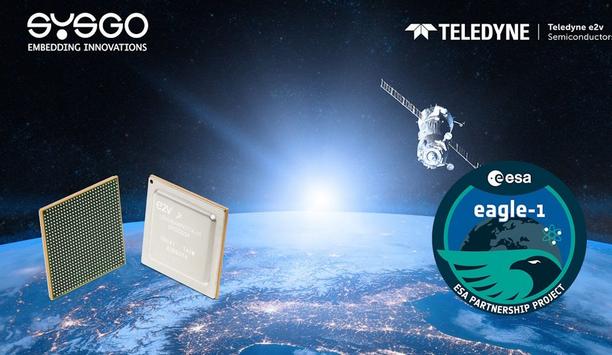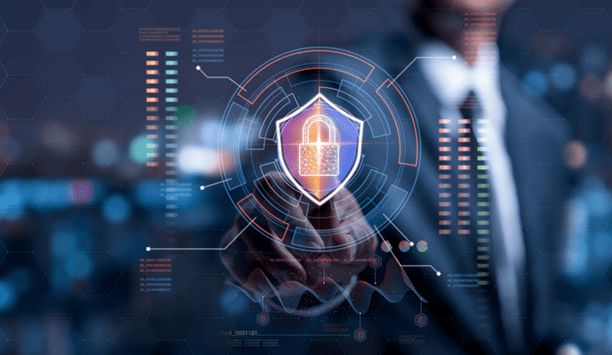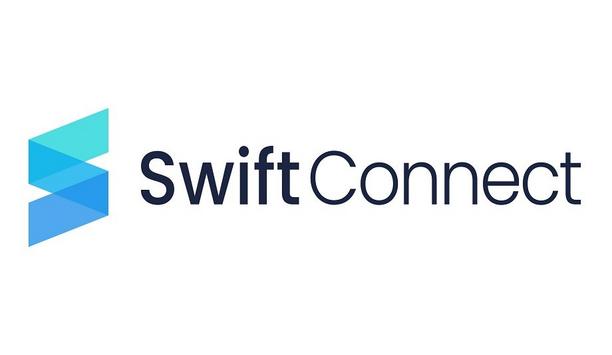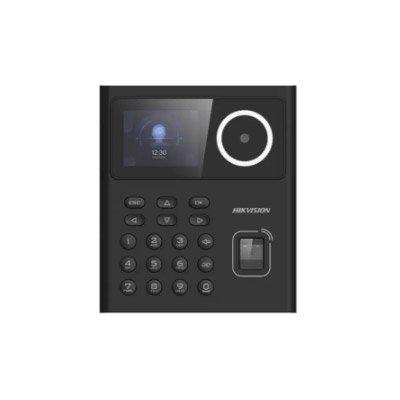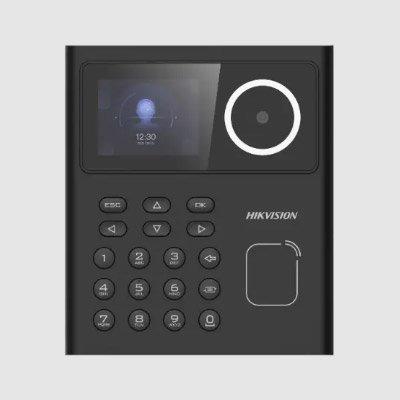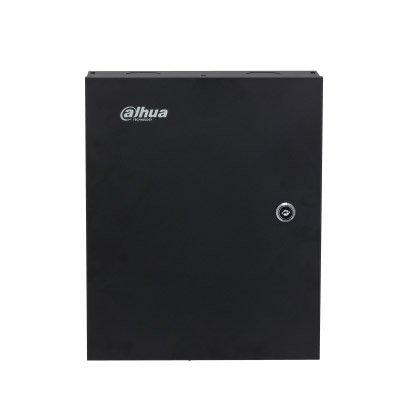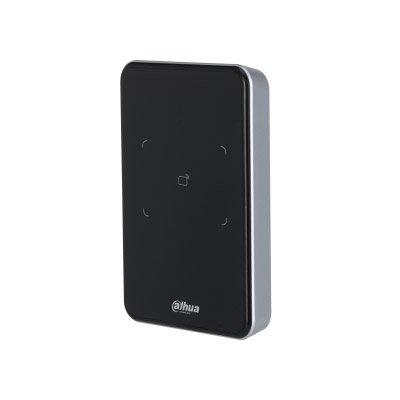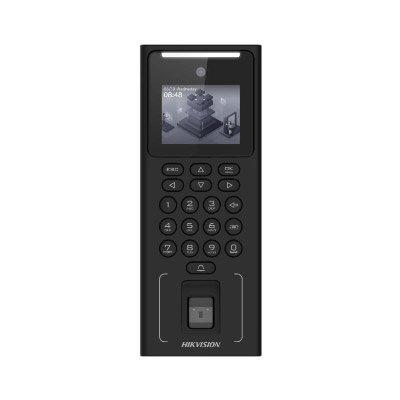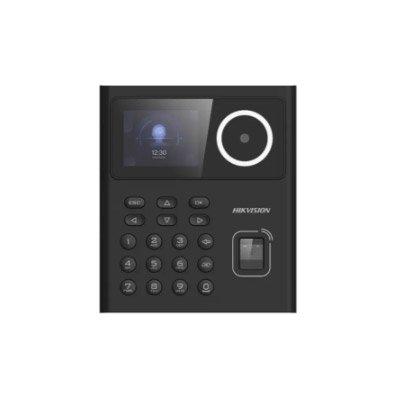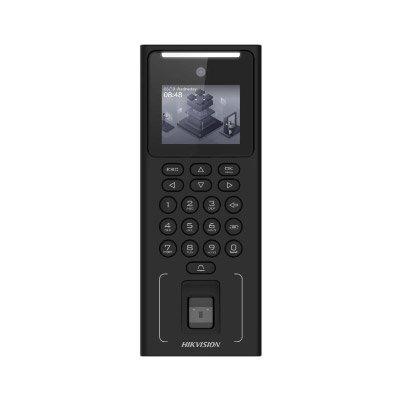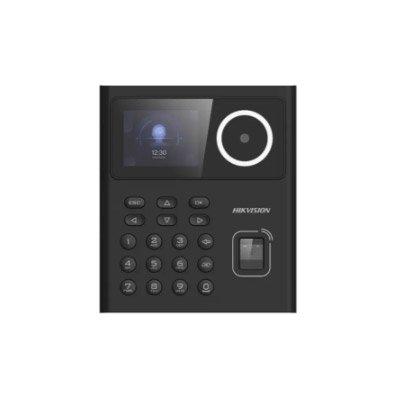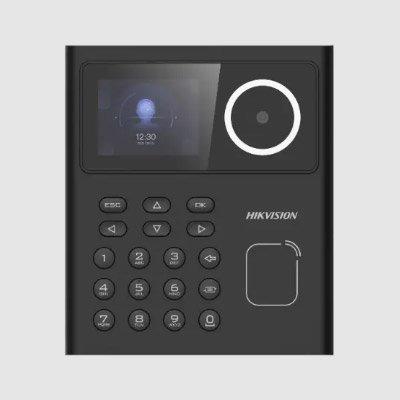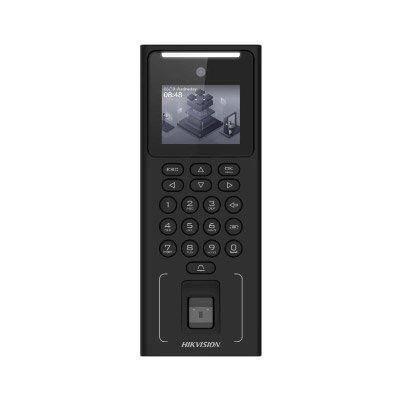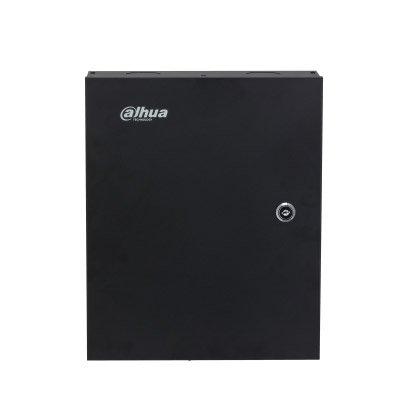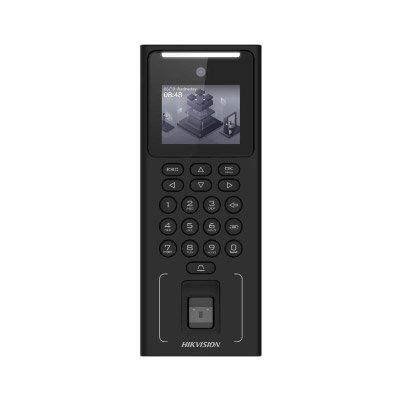Building security
Elite Interactive Solutions, a remote video guarding pioneer using patented intelligence and integration to achieve proven crime prevention, recently gathered law enforcement officials to its headquarters for a special invitational lunch-and-learn event. The function exemplifies Elite’s multifaceted mission to strengthen private-public partnerships by educating officers on how remote guarding directly prevents crime and protects properties in real-time, eliminates false alarms, boosts law...
iDenfy, a US-based fraud prevention and identity verification company best known for its AI-powered RegTech automation solutions, partners with Reppublika Data Analytics & Technologies, a pioneer European software firm providing innovative SaaS solutions to the market research industry. iDenfy’s identity verification software will help the business verify all customers who are conducting surveys online while detecting fraudulent users with fake personal details or other renderings, of...
Umazi, a pioneer in digital identity verification solutions, has welcomed the latest report from CFIT, Fighting Economic Crime Through Digital Verification: The Case for Adopting a Digital Company ID in the UK. The report highlights the potential to revolutionise business operations in the UK by improving efficiency, security, and trust. Innovating business verification CFIT has convened over 70 pioneer organisations to design and develop the Digital Company ID—a unique digital represen...
Skills for Security is proud to announce Nimbus Digital and Gallagher Security as its new Platinum Sponsors. The latest partnerships reflect a shared commitment to investing in the future of fire safety and security professionals. Digital compliance solutions Nimbus Digital, a pioneer provider of fire safety management and digital compliance solutions, and Gallagher Security, an award-winning global pioneer in innovative security and access technology, join Skills for Security in its mission...
The revised EU Construction Products Regulation officially came into force on January 7, 2025, bringing updates to the regulatory framework for construction products. However, despite its adoption, nothing will change in the short term for CE marking and EU declarations of conformity, including those in the fire safety industry. Evolving compliance Until new harmonised technical specifications are developed and adopted - based on a forthcoming standardisation request - the existing harmonised...
Smiths Detection, a global pioneer in threat detection and security screening and a business of Smiths Group, has announced a new partnership with NeuralGuard to advance AI-driven threat detection in security screening. NeuralGuard’s AI technology is undergoing integration and certification for use with Smiths Detection’s HI SCAN 6040 2-is. This collaboration was undertaken as part of Smiths Detection’s Ada Initiative, the company’s structured framework for accelerating...
News
SYSGO, a European pioneer in secure real-time software solutions, has been chosen to supply cutting-edge software technology for the EAGLE-1 project. This innovative mission, led by SES, a provider of global content and connectivity solutions, in collaboration with 20 European partners and supported by the European Space Agency and the European Commission, will enable long-distance Quantum Key Distribution. The mission's goal is to design, launch, and operate EAGLE-1, establishing the first sovereign European space-based QKD system. Defending data integrity SYSGO’s PikeOS stands out as a hypervisor and real-time operating system that addresses the needs of applications As quantum computing advances, the urgency to protect data against potential quantum decryption threats becomes increasingly critical. In response, global efforts to develop quantum-secure communication infrastructures are rapidly progressing. EAGLE-1, a pioneering European satellite mission, marks a significant step in this initiative, aimed at ensuring data security in the face of unprecedented computational power. SYSGO’s PikeOS stands out as a hypervisor and real-time operating system that addresses the complex needs of safety-critical, mixed-criticality applications. PikeOS ensures that each application runs securely and independently through robust multi-partitioning, which is fundamental for missions like EAGLE-1. Radiation-hardened computing This sophisticated partitioning technology provides strict data integrity and reliable separation, even in environments where diverse software packages operate simultaneously. By leveraging PikeOS, the satellite’s payload and ground station software achieve the high determinism required for seamless quantum key distribution. Moreover, PikeOS supports real-time execution down to the microsecond level, making it perfectly suited for space operations. Another key advantage of PikeOS is its ability to run efficiently on space-hardened hardware, such as the Teledyne e2v QLS1046-Space microprocessor, a robust platform built to withstand radiation while delivering powerful computation at 30K DMIPS. Effiecient data management This setup also offers high-speed data management, incorporating advanced features like 10 Gb Ethernet and PCIe Gen3. In tandem, SYSGO’s ELinOS embedded Linux system complements PikeOS, managing non-real-time components effectively. The integration of these two technologies ensures a balanced and high-performing environment for the entire QKD infrastructure. Quantum security leap Together with ELinOS, an embedded Linux distribution also from SYSGO, the EAGLE-1 system benefits from a seamless integration of secure, real-time and non-real-time software components, enhancing reliability and performance in space and on the ground. Once operational, the EAGLE-1 satellite will serve as a critical infrastructure for testing and validating quantum-safe communications across Europe. It will provide early access to QKD technology, setting the stage for robust cybersecurity measures as quantum advancements evolve. Eagle-1 emphasises Europe’s pioneer in space-based quantum communication and data protection, and taking a crucial step towards ensuring resilient communication infrastructures within Europe and beyond.
Johnson Controls, the pioneer for smart, healthy and sustainable buildings, announced the introduction of PowerG +, the next generation of trusted PowerG technology. PowerG + adds new, in-demand features atop PowerG's strong foundational capabilities to power the next generation of security and home automation. Modern security protocols “PowerG + uplevels our proprietary wireless technology, helping us meet the evolving needs of dealers and end users while raising the bar for modern security protocols,” said Faisal Pandit, vice president and general manager of Global Security Products at Johnson Controls. “The feedback loop we’ve established with our customers builds trust and enables us to deliver the most impactful features they need to scale and improve their businesses.” Next generation of PowerG + Power G + builds upon that strong foundation, launching immediately on 11 devices Power G is known for its vast ecosystem and trusted reputation, and Power G + builds upon that strong foundation, launching immediately on 11 devices. New devices included in the next generation of PowerG + include Indoor PIR Cam and Indoor Motion PIR, Door/Window Contact with Auxiliary Input, Vanishing Door/Window Contact, Wireless Repeater, Glass Break Detector, Water Tile with Freeze Detection, Smoke/Heat Detector, and PGP-IO, a device enabling the remote control of wired devices. Key product features of PowerG + sensors PowerG + sensors will enrol on all 4th Generation IQ Panels and the new features will be standard on all new devices as well as accessible on other systems through future releases. Key product features include: Enhanced functionality: With real-time battery life reporting, dealers can proactively check the exact battery percentage of all devices, not just low-battery notifications, to increase the efficiency of service calls and maximise their time. More control: Sensor lockdown is now accessible to every dealer, providing takeover prevention at the device level. Equipped with temperature sensing and other multi-sensing technologies, PowerG + devices are integrating more environmental data to become smarter than ever. Secure, future-proof technology: PowerG + sensors can be upgraded with over-the-air updates or promptly resolve any issues with devices remotely. Equipped with encryption against cyber threats, PowerG + devices also feature two-factor authentication during enrolment for added security. A modern design: PowerG + devices and packaging have been refreshed for a modern look and feel. Matte-finish shells in multiple colours can be fitted to the select PowerG + devices, offering flexibility to blend hardware seamlessly into any environment. Wireless connectivity of PowerG + PowerG + is now open for purchase globally, with select PowerG + devices available to purchase Johnson Controls will also preview the launch of IQ Panel 5. With trailblazing capabilities, future-ready updates and the pioneering wireless connectivity of PowerG +, the IQ Panel 5 offers the advanced security and automation the end users demand while maintaining the familiarity of IQ Panel 4. PowerG + will be on display at ISC West 2025 in Las Vegas from March 31 – April 4 (Booth #18033) for attendees to experience first-hand. PowerG + is currently available for purchase globally, with select PowerG + devices available to purchase at ISC West 2025. Next era for commercial buildings Johnson Controls proudly celebrates its 140th anniversary in 2025, marking a legacy of innovation and leadership in smart, safe, healthy and sustainable solutions. The company continues to redefine building performance, driving the next era for commercial buildings, transforming industries and powering its customers’ missions.
MERON will be demonstrating its innovative physical identity, access, and incident management solution by appointment only at ISC West 2025 in Las Vegas, April 2-4. MERON PIAM+ leverages the latest advancements in data science, AI and microservices architecture, setting new benchmarks in performance and cost efficiency for large enterprise applications. Transforming access management “MERON PIAM+ has experienced an extremely high level of interest from large enterprise organisations since its public debut in the fall of 2024,” said Sharad Shekhar, Principal at MERON. “Our solution resolves the significant shortfalls of older generation PIAM applications related to scalability, integration, security and cost savings.” Advanced AI integration The unique PIAM+ solution employs the latest concepts in computer science including in-memory data structures MERON PIAM+ integrates advanced AI technologies, automation and analytics to provide enhanced security, efficiency, and adaptability. The unique PIAM+ solution employs the latest concepts in computer science including in-memory data structures, infinitely scalable microservices, data management architecture, streaming data analytics and integration, and a highly advanced AI engine that drives intelligent Co-pilots to automate tasks and workloads. All this combines to provide fast transactional performance and automatic self-healing processes with 99.9% uptime. Enhanced security & efficiency MERON PIAM+ key benefits include: Comprehensive identity lifecycle management Automated Co-pilots to eliminate error laden manual processes Layered cybersecurity across microservice applications Real-time analytics to derive actionable insights and detect anomalies Easily scalable, maintainable and upgradable architecture Integrated visitor and incident management Up to 50% reduction in ID management cost Distributed data and event streaming up to 300% faster Extensive API support for efficient integrations Fast and easy implementation
At ISC West, trusted security brands Yale and Master Lock announced their newest lines of smart locks for businesses and multi-family facilities. Part of Fortune Brands Innovations, Inc., Yale and Master Lock are expanding their professional portfolios to offer a new level of security and convenience for multi-family properties, offices, schools, healthcare facilities, small and medium businesses, and more. Product lines under Yale and Master Lock “By launching these new product lines under Yale and Master Lock, we are poised to serve a greater share of the professional market,” said Dave Barry, President of Security & Connected Products at Fortune Brands. “Yale is continuing its legacy of providing flexible solutions for multi-family environments, simplifying access decisions for our partners and operators. Master Lock is delivering solutions to secure access for essential places like schools, healthcare facilities, small and medium businesses, and more.” Key features of Yale’s new multi-family product Yale’s multi-family product line will serve partners and operators with innovative and flexible Yale’s new multi-family product line will serve partners and operators with innovative, flexible, and scalable access control solutions. Designed to enhance security at every entrance, the Yale Pro® 2 Interconnected Lock, Yale Pro® 2 Mortise Lock, and Yale Pro® 2 Cylindrical Lock include key features such as: Flexible Connectivity: With Yale’s range of technology offerings, multi-family properties can choose between: Z-Wave (800 series) module offering long-range support and SmartStart Zigbee module offering app compatibility with top smart home partners Wi-Fi module offering remote access and easy app management Single Action Egress: Meeting all code requirements, multi-family apartment doors can be unlocked in one motion, all with top ANSI/BHMA grading and 90- to 190-minute fire ratings (fire ratings vary by model). Tamper-Proof: Each product is available as a key-free model to provide convenient, keyless access for residence doors—so they can’t be picked, there are no keys to lose, and installers save money by no longer having to address tenant lockouts or rekey apartments after residents move out. Award Winning Design: Modeled after Yale’s award-winning residential product line, Yale Assure Lock® 2, the new multi-family product line features seamless pairing for apartment buildings, no matter what lock style is chosen for apartment or common area doors. Key features of Master Lock Master Lock is also unveiling a new line of locks designed for commercial applications Master Lock is also unveiling a new line of locks designed for commercial applications. The Master Lock Electronic and Connected Mortise Locks and the Master Lock Electronic and Connected Cylindrical Locks offer more advanced access management and tracking, providing commercial owners the confidence that their properties are protected. The introduction of these new products will expand Master Lock’s renowned brand applications to include schools, healthcare facilities, small and medium businesses, and more. Key features include: Flexible Connectivity: With different technology offerings, installers can choose the right technology for their customers, including: Z-Wave (800 series) module offering long-range support and SmartStart Zigbee module offering app compatibility with top smart home partners Non-connected (no module) offering keypad access only Convenient, Key-Free Access: Control access to common areas, exterior doors, residence doors, and stairwells to enhance facility security with access control at every opening. Options for Every Door: Product options are available for standard cylindrical or mortise door prep, and offer top ANSI/BHMA Grade 1 and a 180-minute fire rating. These products will be available for customers to order later this year. Attendees at ISC West can learn more about how Yale and Master Lock are creating safer multi-family housing and businesses at booth #24131.
Omny looks forward to welcoming Kenneth Titlestad as its new Chief Commercial Officer, effective 1 April 2025. Transitioning from his role at Sopra Steria, where he was instrumental in building the company’s Operational Technology (OT) cybersecurity competence, Kenneth will now spearhead Omny’s commercial strategy, reporting to the CEO and part of the Omny management team. Prior roles of Kenneth Kenneth’s career in OT cybersecurity took root in Equinor, where he leveraged his IT background to strengthen the security of industrial control systems for their offshore and onshore operations. Nine years later, he joined Sopra Steria, applying his OT security expertise to a wide variety of industrial clients and serving as Chair for industrial cybersecurity in the Norwegian Electrotechnical Committee (NEK), contributing to the development of international OT cybersecurity standards. Omny’s development Kenneth saw an opportunity to continue his OT cybersecurity journey inside Omny “My father spent his career offshore and was on the way to the platform during the 1977 Ekofisk Bravo accident, one of the biggest safety incidents in Norway. This set the stage for all kinds of interesting security discussions at home, and it was perhaps the catalyst for my future career in making industrial settings safer and more secure,” says Kenneth. Having followed Omny’s development since day one, while spearheading efforts in Sopra Steria to strengthen OT cybersecurity across industries, Kenneth saw an opportunity to continue his OT cybersecurity journey inside Omny – a company uniquely positioned in the industry with backing from Aker, Cognite, and Telenor. Omny's growth and security “Commercial success in today’s volatile and rapidly evolving cyber landscape is about building lasting relationships, understanding our clients’ challenges, and providing clear, actionable advice that aligns with their business objectives,” adds Kenneth. “At Omny, I see a unique opportunity to blend our technical capabilities with a robust commercial strategy, ensuring that companies can prioritise both growth and security in our increasingly digital world.” Educational background of Kenneth Kenneth holds a degree in organisational psychology from the University of Bergen Kenneth holds a degree in organisational psychology from the University of Bergen, which gives him a unique blend of technical insight and an understanding of human dynamics. His extensive experience in both consulting and hands-on OT security projects will be an asset to Omny’s clients as they navigate the complexities of the threat landscape. Omny security challenges “The Omny leadership team is excited to welcome Kenneth,” says Omny CEO, Sigvart Eriksen. “His proven track record in building strong client relationships and his passion for OT cybersecurity will be key to expanding the company’s reach and enhancing its ability to support industries facing unprecedented security challenges.”
Zenitel, a global pioneer in Unified Critical Communication solutions, is launching two new innovations for mixed-use building communication solutions: the Zenitel Display Door intercom (ZDD-1) and the Zenitel Slim Door intercom (ZSD-1). This launch further strengthens Zenitel’s position as a market leader in audio communication solutions. Amazing sound, effortlessly integrated New door entry intercoms are engineered from the ground up, offering a premium audio experience With 125 years of experience in sound design, these new door entry intercoms are engineered from the ground up, offering a premium audio experience in a sleek design that seamlessly blends into any building. With ONVIF compatibility, they seamlessly integrate with surveillance systems, providing an additional layer of security for effective identification and entry control. “Door entry intercoms are an essential part of overall building security, and there are plenty of options available on the market. However, we had a different vision for ours – to uniquely enhance our customer experience and continue elevating audio quality, which is the cornerstone for Zenitel,” said Lars Paulsson, EVP for Safety and Security at Zenitel. "The combination of high-quality hardware, advanced software-driven audio processing, and precision engineering makes our new door entry intercoms the most realistic-sounding intercom on the market.” Zenitel display door Built on Zenitel’s industry-leading sound technology, the Zenitel Display Door intercom features a speaker and microphone array to deliver an immersive sound experience, while high sound pressure levels make it ideal even for high-noise environments. The bi-directional video communication enables face-to-face interaction, fostering a sense of connection, while also supporting the needs of sign language users. The Zenitel Display Door (ZDD-1) features an intuitive touch display with an easy-to-use UI/UX, making navigation simple and efficient for all users. Zenitel slim door The Zenitel Slim Door (ZSD-1) is a compact yet powerful, outdoor-ready intercom that delivers premium sound in a sleek design, with easy installation in tight spaces, including door frames. The intuitive design of this intercom offers visual and aural feedback to ensure ease of use for all users. Unified communication As organizations seek to secure assets and streamline operations through technology, Zenitel’s latest innovations in door entry communications, combined with Zenitel Connect Pro — the industry's first Unified Critical Communication Platform — pave the way for unifying communication needs under a single platform for building owners. Additionally, built-in cybersecurity features of these intercoms ensure secure and encrypted communication at the door.
SYSGO, a European pioneer in secure real-time software solutions, has been chosen to supply cutting-edge software technology for the EAGLE-1 project. This innovative mission, led by SES, a provider of global content and connectivity solutions, in collaboration with 20 European partners and supported by the European Space Agency and the European Commission, will enable long-distance Quantum Key Distribution. The mission's goal is to design, launch, and operate EAGLE-1, establishing the first sovereign European space-based QKD system. Defending data integrity SYSGO’s PikeOS stands out as a hypervisor and real-time operating system that addresses the needs of applications As quantum computing advances, the urgency to protect data against potential quantum decryption threats becomes increasingly critical. In response, global efforts to develop quantum-secure communication infrastructures are rapidly progressing. EAGLE-1, a pioneering European satellite mission, marks a significant step in this initiative, aimed at ensuring data security in the face of unprecedented computational power. SYSGO’s PikeOS stands out as a hypervisor and real-time operating system that addresses the complex needs of safety-critical, mixed-criticality applications. PikeOS ensures that each application runs securely and independently through robust multi-partitioning, which is fundamental for missions like EAGLE-1. Radiation-hardened computing This sophisticated partitioning technology provides strict data integrity and reliable separation, even in environments where diverse software packages operate simultaneously. By leveraging PikeOS, the satellite’s payload and ground station software achieve the high determinism required for seamless quantum key distribution. Moreover, PikeOS supports real-time execution down to the microsecond level, making it perfectly suited for space operations. Another key advantage of PikeOS is its ability to run efficiently on space-hardened hardware, such as the Teledyne e2v QLS1046-Space microprocessor, a robust platform built to withstand radiation while delivering powerful computation at 30K DMIPS. Effiecient data management This setup also offers high-speed data management, incorporating advanced features like 10 Gb Ethernet and PCIe Gen3. In tandem, SYSGO’s ELinOS embedded Linux system complements PikeOS, managing non-real-time components effectively. The integration of these two technologies ensures a balanced and high-performing environment for the entire QKD infrastructure. Quantum security leap Together with ELinOS, an embedded Linux distribution also from SYSGO, the EAGLE-1 system benefits from a seamless integration of secure, real-time and non-real-time software components, enhancing reliability and performance in space and on the ground. Once operational, the EAGLE-1 satellite will serve as a critical infrastructure for testing and validating quantum-safe communications across Europe. It will provide early access to QKD technology, setting the stage for robust cybersecurity measures as quantum advancements evolve. Eagle-1 emphasises Europe’s pioneer in space-based quantum communication and data protection, and taking a crucial step towards ensuring resilient communication infrastructures within Europe and beyond.
Johnson Controls, the pioneer for smart, healthy and sustainable buildings, announced the introduction of PowerG +, the next generation of trusted PowerG technology. PowerG + adds new, in-demand features atop PowerG's strong foundational capabilities to power the next generation of security and home automation. Modern security protocols “PowerG + uplevels our proprietary wireless technology, helping us meet the evolving needs of dealers and end users while raising the bar for modern security protocols,” said Faisal Pandit, vice president and general manager of Global Security Products at Johnson Controls. “The feedback loop we’ve established with our customers builds trust and enables us to deliver the most impactful features they need to scale and improve their businesses.” Next generation of PowerG + Power G + builds upon that strong foundation, launching immediately on 11 devices Power G is known for its vast ecosystem and trusted reputation, and Power G + builds upon that strong foundation, launching immediately on 11 devices. New devices included in the next generation of PowerG + include Indoor PIR Cam and Indoor Motion PIR, Door/Window Contact with Auxiliary Input, Vanishing Door/Window Contact, Wireless Repeater, Glass Break Detector, Water Tile with Freeze Detection, Smoke/Heat Detector, and PGP-IO, a device enabling the remote control of wired devices. Key product features of PowerG + sensors PowerG + sensors will enrol on all 4th Generation IQ Panels and the new features will be standard on all new devices as well as accessible on other systems through future releases. Key product features include: Enhanced functionality: With real-time battery life reporting, dealers can proactively check the exact battery percentage of all devices, not just low-battery notifications, to increase the efficiency of service calls and maximise their time. More control: Sensor lockdown is now accessible to every dealer, providing takeover prevention at the device level. Equipped with temperature sensing and other multi-sensing technologies, PowerG + devices are integrating more environmental data to become smarter than ever. Secure, future-proof technology: PowerG + sensors can be upgraded with over-the-air updates or promptly resolve any issues with devices remotely. Equipped with encryption against cyber threats, PowerG + devices also feature two-factor authentication during enrolment for added security. A modern design: PowerG + devices and packaging have been refreshed for a modern look and feel. Matte-finish shells in multiple colours can be fitted to the select PowerG + devices, offering flexibility to blend hardware seamlessly into any environment. Wireless connectivity of PowerG + PowerG + is now open for purchase globally, with select PowerG + devices available to purchase Johnson Controls will also preview the launch of IQ Panel 5. With trailblazing capabilities, future-ready updates and the pioneering wireless connectivity of PowerG +, the IQ Panel 5 offers the advanced security and automation the end users demand while maintaining the familiarity of IQ Panel 4. PowerG + will be on display at ISC West 2025 in Las Vegas from March 31 – April 4 (Booth #18033) for attendees to experience first-hand. PowerG + is currently available for purchase globally, with select PowerG + devices available to purchase at ISC West 2025. Next era for commercial buildings Johnson Controls proudly celebrates its 140th anniversary in 2025, marking a legacy of innovation and leadership in smart, safe, healthy and sustainable solutions. The company continues to redefine building performance, driving the next era for commercial buildings, transforming industries and powering its customers’ missions.
MERON will be demonstrating its innovative physical identity, access, and incident management solution by appointment only at ISC West 2025 in Las Vegas, April 2-4. MERON PIAM+ leverages the latest advancements in data science, AI and microservices architecture, setting new benchmarks in performance and cost efficiency for large enterprise applications. Transforming access management “MERON PIAM+ has experienced an extremely high level of interest from large enterprise organisations since its public debut in the fall of 2024,” said Sharad Shekhar, Principal at MERON. “Our solution resolves the significant shortfalls of older generation PIAM applications related to scalability, integration, security and cost savings.” Advanced AI integration The unique PIAM+ solution employs the latest concepts in computer science including in-memory data structures MERON PIAM+ integrates advanced AI technologies, automation and analytics to provide enhanced security, efficiency, and adaptability. The unique PIAM+ solution employs the latest concepts in computer science including in-memory data structures, infinitely scalable microservices, data management architecture, streaming data analytics and integration, and a highly advanced AI engine that drives intelligent Co-pilots to automate tasks and workloads. All this combines to provide fast transactional performance and automatic self-healing processes with 99.9% uptime. Enhanced security & efficiency MERON PIAM+ key benefits include: Comprehensive identity lifecycle management Automated Co-pilots to eliminate error laden manual processes Layered cybersecurity across microservice applications Real-time analytics to derive actionable insights and detect anomalies Easily scalable, maintainable and upgradable architecture Integrated visitor and incident management Up to 50% reduction in ID management cost Distributed data and event streaming up to 300% faster Extensive API support for efficient integrations Fast and easy implementation
At ISC West, trusted security brands Yale and Master Lock announced their newest lines of smart locks for businesses and multi-family facilities. Part of Fortune Brands Innovations, Inc., Yale and Master Lock are expanding their professional portfolios to offer a new level of security and convenience for multi-family properties, offices, schools, healthcare facilities, small and medium businesses, and more. Product lines under Yale and Master Lock “By launching these new product lines under Yale and Master Lock, we are poised to serve a greater share of the professional market,” said Dave Barry, President of Security & Connected Products at Fortune Brands. “Yale is continuing its legacy of providing flexible solutions for multi-family environments, simplifying access decisions for our partners and operators. Master Lock is delivering solutions to secure access for essential places like schools, healthcare facilities, small and medium businesses, and more.” Key features of Yale’s new multi-family product Yale’s multi-family product line will serve partners and operators with innovative and flexible Yale’s new multi-family product line will serve partners and operators with innovative, flexible, and scalable access control solutions. Designed to enhance security at every entrance, the Yale Pro® 2 Interconnected Lock, Yale Pro® 2 Mortise Lock, and Yale Pro® 2 Cylindrical Lock include key features such as: Flexible Connectivity: With Yale’s range of technology offerings, multi-family properties can choose between: Z-Wave (800 series) module offering long-range support and SmartStart Zigbee module offering app compatibility with top smart home partners Wi-Fi module offering remote access and easy app management Single Action Egress: Meeting all code requirements, multi-family apartment doors can be unlocked in one motion, all with top ANSI/BHMA grading and 90- to 190-minute fire ratings (fire ratings vary by model). Tamper-Proof: Each product is available as a key-free model to provide convenient, keyless access for residence doors—so they can’t be picked, there are no keys to lose, and installers save money by no longer having to address tenant lockouts or rekey apartments after residents move out. Award Winning Design: Modeled after Yale’s award-winning residential product line, Yale Assure Lock® 2, the new multi-family product line features seamless pairing for apartment buildings, no matter what lock style is chosen for apartment or common area doors. Key features of Master Lock Master Lock is also unveiling a new line of locks designed for commercial applications Master Lock is also unveiling a new line of locks designed for commercial applications. The Master Lock Electronic and Connected Mortise Locks and the Master Lock Electronic and Connected Cylindrical Locks offer more advanced access management and tracking, providing commercial owners the confidence that their properties are protected. The introduction of these new products will expand Master Lock’s renowned brand applications to include schools, healthcare facilities, small and medium businesses, and more. Key features include: Flexible Connectivity: With different technology offerings, installers can choose the right technology for their customers, including: Z-Wave (800 series) module offering long-range support and SmartStart Zigbee module offering app compatibility with top smart home partners Non-connected (no module) offering keypad access only Convenient, Key-Free Access: Control access to common areas, exterior doors, residence doors, and stairwells to enhance facility security with access control at every opening. Options for Every Door: Product options are available for standard cylindrical or mortise door prep, and offer top ANSI/BHMA Grade 1 and a 180-minute fire rating. These products will be available for customers to order later this year. Attendees at ISC West can learn more about how Yale and Master Lock are creating safer multi-family housing and businesses at booth #24131.
Omny looks forward to welcoming Kenneth Titlestad as its new Chief Commercial Officer, effective 1 April 2025. Transitioning from his role at Sopra Steria, where he was instrumental in building the company’s Operational Technology (OT) cybersecurity competence, Kenneth will now spearhead Omny’s commercial strategy, reporting to the CEO and part of the Omny management team. Prior roles of Kenneth Kenneth’s career in OT cybersecurity took root in Equinor, where he leveraged his IT background to strengthen the security of industrial control systems for their offshore and onshore operations. Nine years later, he joined Sopra Steria, applying his OT security expertise to a wide variety of industrial clients and serving as Chair for industrial cybersecurity in the Norwegian Electrotechnical Committee (NEK), contributing to the development of international OT cybersecurity standards. Omny’s development Kenneth saw an opportunity to continue his OT cybersecurity journey inside Omny “My father spent his career offshore and was on the way to the platform during the 1977 Ekofisk Bravo accident, one of the biggest safety incidents in Norway. This set the stage for all kinds of interesting security discussions at home, and it was perhaps the catalyst for my future career in making industrial settings safer and more secure,” says Kenneth. Having followed Omny’s development since day one, while spearheading efforts in Sopra Steria to strengthen OT cybersecurity across industries, Kenneth saw an opportunity to continue his OT cybersecurity journey inside Omny – a company uniquely positioned in the industry with backing from Aker, Cognite, and Telenor. Omny's growth and security “Commercial success in today’s volatile and rapidly evolving cyber landscape is about building lasting relationships, understanding our clients’ challenges, and providing clear, actionable advice that aligns with their business objectives,” adds Kenneth. “At Omny, I see a unique opportunity to blend our technical capabilities with a robust commercial strategy, ensuring that companies can prioritise both growth and security in our increasingly digital world.” Educational background of Kenneth Kenneth holds a degree in organisational psychology from the University of Bergen Kenneth holds a degree in organisational psychology from the University of Bergen, which gives him a unique blend of technical insight and an understanding of human dynamics. His extensive experience in both consulting and hands-on OT security projects will be an asset to Omny’s clients as they navigate the complexities of the threat landscape. Omny security challenges “The Omny leadership team is excited to welcome Kenneth,” says Omny CEO, Sigvart Eriksen. “His proven track record in building strong client relationships and his passion for OT cybersecurity will be key to expanding the company’s reach and enhancing its ability to support industries facing unprecedented security challenges.”
Zenitel, a global pioneer in Unified Critical Communication solutions, is launching two new innovations for mixed-use building communication solutions: the Zenitel Display Door intercom (ZDD-1) and the Zenitel Slim Door intercom (ZSD-1). This launch further strengthens Zenitel’s position as a market leader in audio communication solutions. Amazing sound, effortlessly integrated New door entry intercoms are engineered from the ground up, offering a premium audio experience With 125 years of experience in sound design, these new door entry intercoms are engineered from the ground up, offering a premium audio experience in a sleek design that seamlessly blends into any building. With ONVIF compatibility, they seamlessly integrate with surveillance systems, providing an additional layer of security for effective identification and entry control. “Door entry intercoms are an essential part of overall building security, and there are plenty of options available on the market. However, we had a different vision for ours – to uniquely enhance our customer experience and continue elevating audio quality, which is the cornerstone for Zenitel,” said Lars Paulsson, EVP for Safety and Security at Zenitel. "The combination of high-quality hardware, advanced software-driven audio processing, and precision engineering makes our new door entry intercoms the most realistic-sounding intercom on the market.” Zenitel display door Built on Zenitel’s industry-leading sound technology, the Zenitel Display Door intercom features a speaker and microphone array to deliver an immersive sound experience, while high sound pressure levels make it ideal even for high-noise environments. The bi-directional video communication enables face-to-face interaction, fostering a sense of connection, while also supporting the needs of sign language users. The Zenitel Display Door (ZDD-1) features an intuitive touch display with an easy-to-use UI/UX, making navigation simple and efficient for all users. Zenitel slim door The Zenitel Slim Door (ZSD-1) is a compact yet powerful, outdoor-ready intercom that delivers premium sound in a sleek design, with easy installation in tight spaces, including door frames. The intuitive design of this intercom offers visual and aural feedback to ensure ease of use for all users. Unified communication As organizations seek to secure assets and streamline operations through technology, Zenitel’s latest innovations in door entry communications, combined with Zenitel Connect Pro — the industry's first Unified Critical Communication Platform — pave the way for unifying communication needs under a single platform for building owners. Additionally, built-in cybersecurity features of these intercoms ensure secure and encrypted communication at the door.


Expert commentary
Digital access control has well-known benefits over traditional security, of course, but also costs attached to each stage of its lifetime. However, these costs are not fixed. Many factors – including building size, shape, type, location, national regulations and more – impact affordability and efficiency calculations. Crucially, the type of access solution a business selects – wired or wireless – impacts total operating costs, including during installation, running and any potential expansion or reconfiguration stages. Wireless installation Wiring premises can be expensive. So, the potential cost savings from choosing wireless digital access begin at the very start. Installation stage is the largest contributor to potential cost savings when businesses go wireless. In calculations for one report, access experts at ASSA ABLOY examined projected costs for a fictional 100-door installation. Labour savings for those who chose wireless over wired locks were 82.5%. Why? Firstly, because wireless installation is much faster. It is also less intrusive. Most wireless locking devices require little or no drilling of the door, whereas wired security needs cabling through and partly around a door – which means not just door damage, but the contracting of specialist electrical installers who may require multiple site visits. These costs add up. Digital access technology Torus aims for the highest level of LEED certification for all its new properties In Poland, for example, developer Torus aims for the highest level of LEED certification for all their new properties around Gdansk. Where possible, they choose products with Environmental Product Declarations (EPDs) and Green Circle documentation, favouring access solutions which reduce their carbon footprint. Wireless digital access technology is a natural choice. “The lack of wiring significantly reduces materials use, reduces costs, and ensures quick installation,” confirms Torus’ Roman Sokolowski. There’s no cabling, which cuts power consumption. There’s less damage to the building fabric and fitters make fewer journeys to and from the site. Adaptable locking solution By choosing a wireless solution, organisations also upgrade building security with little disruption. A wireless system makes it easier to improve security at an existing building via a retrofit process which does not inconvenience staff or disturb work routines. This was one goal at Plexal, a £15 million flexible work environment for London enterprise and academia. Plexal chose battery powered wireless locks integrated with DoorFlow, NetNodes’ online platform for managing and auditing building access. “Plexal required an adaptable locking solution for a range of different doors and, with no wiring required, it was quick and easy to install ASSA ABLOY Aperio® devices with minimal disruption,” confirms Stewart Johnson, Director at NetNodes. Cost savings with improved energy efficiency Choosing wireless over wired locking can play a vital role in reducing ongoing energy use Choosing wireless over wired locking can play an important role in reducing ongoing energy use – and, therefore, expenditure. Wholesale electricity prices in Europe are approximately double what they were in 2019, according to the IEA’s “Electricity 2024” report. For a variable cost such as energy, where businesses have little control over unit prices, it is critical to control usage, especially if high and/or changeable energy prices become what analysts at ING called “the new normal for business”. Thus, the fact that battery-powered locks consume much less energy than traditional wired solutions is increasingly relevant and important. Additional saving on energy costs Traditional wired door access devices often work via magnets connected permanently to mains electricity. These doors draw power around the clock to remain locked. Wireless locks work differently. They only “wake up” when presented with a credential, to make the access decision. This translates to an additional saving on energy costs during operation: more than 70%, or thousands of euros over a typical access system’s lifetime. Wireless digital access Wireless locks only need a change of their standard battery, which may be rechargeable Related energy and materials costs during in-use stage are also lower. Wireless locks only need a change of their standard battery – which may be rechargeable – typically once every two years. No specialist maintenance is required, saving on specialists and their travel to and from the site(s). By choosing wireless digital access, businesses help protect themselves against these ongoing costs, notably energy price increases and volatility. Cost-efficient flexible working, for staff and facilities managers Perhaps harder to quantify, but equally easy to imagine, the financial benefits of choosing a wireless digital solution are felt in the increased convenience and efficiency of daily operations. In the co-working sector, for example, flexible access to offices is a priority. As “fixed” office space rented by corporations continues to fall, co-working spaces are expected to keep growing, with one estimate suggesting almost 18% CAGR to 2030. To stand out from the competition, the founders of ULab in Alicante sought the latest innovations in access and design to create their 21st-century business centre. Part of the suite of digital access solutions from ASSA ABLOY, a SMARTair® system gave ULab real-time access management via battery-powered locks and Openowä, the Mobile Key solution for SMARTair, without any need to wire doors and other openings. SMARTair TS1000 Web interface With SMARTair and Openow, workspace residents can carry virtual keys on their smartphone With SMARTair and Openow, workspace residents can carry virtual keys on their smartphone; ULab’s security team update their rights over the air. An office manager can perform any operation remotely from the SMARTair TS1000 Web interface. In case of an emergency, they could lock-down the site or open doors remotely, for example. It’s convenient, efficient and boosts ULab’s security, benefiting users and managers. And because of SMARTair’s flexibility, they can comfortably welcome many more than their usual 100 daily users. “In addition to regular daily traffic, weekly traffic can almost multiply by 10 if an event is held,” says Enrique Burgos Pérez, Director at ULab. “We needed an access control system as flexible and convenient as SMARTair.” ASSA ABLOY benchmarking report Choosing wireless locks also adds flexibility – and can reduce costs – when an organisation reconfigures or expands their commercial space. High-quality wireless devices like SMARTair can typically be reinstalled at another opening without impacting reliability. They move to wherever is convenient. If a business is rethinking workspace to encourage flexible or hybrid work patterns, for example, cost efficiencies could be significant. Typical savings on office relocation or expansion are estimated at around 30% with wireless over wired locking, according to the same ASSA ABLOY benchmarking report. Cost efficiency and more control with ASSA ABLOY digital access To refit and improve their student accommodation, managers at the University of St Andrews sought energy- and cost-efficient access control. They chose Aperio, another innovative digital access solution from ASSA ABLOY. Approximately 1,600 doors so far are equipped with battery-powered Aperio escutcheons – without cabling. Aperio devices integrate fully with both the university’s existing central security system and their student ID card. University security managers continue to enjoy the efficiency benefits of monitoring and controlling access from a single point and in real-time, including for doors across multiple buildings. Aperio, another innovative digital access solution from ASSA ABLOY. Benefits of cost-efficiency In comparison to a wired solution, Aperio offers significant cost-efficiency benefits. Devices are wireless, so can be installed with little energy use and no need for wiring to the mains. They consume near-zero energy when idle and run on standard batteries, consuming little power during operation. Through the entire product life-cycle, Aperio combines reliability with cost effectiveness. “Aperio gives us central management and control,” says Pauline Brown, Associate Chief Information Officer at the University of St Andrews, “and contributes to our award-winning track record in energy efficiency.”
For K12 education pioneers, embarking on a journey to upgrade security controls can present a myriad of questions about finding the best-fit solutions and overcoming funding hurdles. A majority of public-school districts today are faced with outdated infrastructure and security controls, requiring necessary upgrades. By addressing these concerns head on, schools will ensure a safer environment for both students and staff, mitigating risks posed by unforeseen physical and digital threats. Common K12 security pain points There’s no one-size-fits-all solution in school district security. School districts may have big plans to implement upgraded security systems but to set out on the right foot, pioneers must have a clear vision of their long-term strategy. When embarking on their security journey, education pioneers often wonder where to start and what exact steps are they need to be taking to identify and address weaknesses. Local K12 and government pioneers are promoting and mandating security assessments to uncover safety gaps on campuses and mitigate these risks with advanced technology solutions. Not only do assessments provide detailed, customisable roadmaps for district pioneers, but they also recommend technologies and funding opportunities to help close threat gaps. K12 school districts are mainly vulnerable to cyber-attacks due to the sensitive nature of student records In today’s climate, schools face a growing number of physical and digital security threats. From a cybersecurity standpoint, K12 school districts are particularly vulnerable to cyber-attacks due to the sensitive nature of student records. However, only one-third of these districts have adequate staffing to address threats effectively. In addition, according to a recent survey from Johnson Controls and Forrester Consulting, security decision-makers are having trouble receiving actionable insights. Nearly two-thirds of respondents said that they struggle to receive information from all necessary systems regarding their security threats. To gain more clarity into what school districts need in terms of security tools and threat mitigation, implementing system-wide monitoring and optimisation can be invaluable. This approach enhances equipment and operational efficiency, while providing necessary resources and expertise for critical patch updates across all systems, strengthening their overall security posture. Achieving a well-rounded security program In the past few years, AI technology has emerged as a trending solution and is generating considerable attention. While the allure of implementing cutting-edge technologies is undeniable, it’s important to recognise that a robust security program hinges on solid access control. Access control technology provides administrators with the means to oversee and regulate entry into facilities, serving as the foundation for basic physical security. The technology helps administrators and staff control access to multiple areas from web-enabled devices, even during lockdowns which is crucial in emergency situations. School district pioneers should utilise available digital risk assessment tools to uncover threat areas Once basic security controls are in place, school districts must address their next set of security pain points and identify which solutions meet their specific needs. This involves identifying and prioritising the highest need and most cost-effective investments that will have the greatest impact on enhancing security measures. To accurately determine which security solutions are needed for a specific environment, school district pioneers should utilise available digital risk assessment tools to uncover threat areas and determine levels of priority. By focusing on these priority areas, districts can allocate their resources and efforts where they are needed most, ensuring maximum effectiveness in mitigating risks and vulnerabilities. Securing funding before approaching deadlines A major challenge for school districts surrounding campus security is identifying and securing the necessary funding to implement solutions aligned with their goals. Leveraging available funding sources is critical, especially considering certain programs are approaching their deadline, like the Elementary and Secondary School Emergency Relief (ESSER) fund. Announced during the pandemic, ESSER is a funding program that has allocated nearly $190 billion in aid to U.S. public school districts to fund projects benefitting the well-being of occupants. Notable ESSER funding deadlines to keep in mind as the clock winds down include September 30, 2024 Notable ESSER funding deadlines to keep in mind as the clock winds down include September 30, 2024, when schools must attribute all of their funds to assigned contracts. Following this date, pioneers will need to complete all ESSER spending by January 2025 unless approved for an extension into March 2025. As ESSER wanes, school districts are acutely aware of the fiscal cliff in budgets through 2025. However, many states are ramping up grant funding to close the deficit gap. Administrators should become familiar with these grant opportunities at a local and state level. Get started on security plans The time for school district pioneers to act is now. While the safety and well-being of students and staff are always top priorities, it’s crucial to acknowledge that a lack of insight into necessary security upgrades and available funding options will leave districts behind the curve. Seizing the final months of ESSER funding presents an ideal window to address security pain points and build a safer future for K12 facilities. Looking beyond ESSER, pioneers must proactively seek out and leverage other funding avenues to help ensure the continuity of their security efforts and maintain a proactive stance in safeguarding healthy and safe educational environments.
As we head into a new year, it’s fair to say that it isn’t easy out there for the security integrator community. That’s understandable given the big ruptures felt in the market for physical security in 2023. Typically, Commercial Real Estate (CRE) landlords are the biggest and most influential buyers of physical security hardware and software, but this is starting to wane as heightened borrowing costs and biting inflation cause real estate valuations to plunge. Building security upgrades A lot of CRE landlords are in a fight for survival which unfortunately doesn't leave much room for budget spend on building security upgrades. This state of affairs is a problem for security integrators with extensive connections in the CRE space. Where do they pivot their services to keep their business growing in 2024? From the conversations I’ve been having with integrators and customers alike over the past few months – the answer is that the growth potential lies in the enterprise space. The trajectory of enterprise IT and physical security Aren’t enterprises carrying out cost-cutting efficiency drives and downsizing office space to reflect hybrid working It might initially feel unnatural to see the enterprise segment as a potential driver of demand for physical security services and products. Aren’t enterprises carrying out cost-cutting efficiency drives and downsizing office space to reflect hybrid working habits? These things are true but also present an opportunity for the right physical security proposition. Standardisation of enterprise IT Take efficiency drives as an example. A key element of such efforts is an acceleration towards the standardisation of enterprise IT platforms, hardware, and solutions, using the cloud. What was once a focus on moving on-prem systems and workloads to the cloud has shifted to efforts to keep cloud OpEx costs down by centralising as much as possible. Practically, this means utilising APIs to plug disparate IT applications and services into central platforms that boast a “single pane of glass” view. APIs APIs drive consumption, open new business models, and foster cross-industry partnerships APIs aren’t anything new to enterprises. They drive consumption, open new business models, and foster cross-industry partnerships. However, the use of APIs in the physical security sphere has been surprisingly slow to take off. There are multiple elements to this but a key reason is that some security software products on the market aren’t cloud-based. Adding cloud-based solutions to network Others are cloud-based, however, and these are the solutions that security integrators need in their portfolio to serve the influential enterprise market segment and its approach to IT networks. Selling the value of these solutions requires integrators to take it a step further by speaking the language of the enterprise IT buyer and understanding their goals. The power of cloud-based access control in the enterprise Hybrid working and the occupancy rate fluctuations it brings require closer monitoring of access events The continued relevance of physical security for enterprises can’t be understated. After all, hybrid working and the occupancy rate fluctuations it brings require closer monitoring of access events – not less. Despite the discourse around office downsizing, the reality for most enterprises is that the office can’t be done away with completely and there’s always going to be growth experienced by successful companies that require an upgrade in physical square footage. Physical security Access control systems that are cloud-based will be preferred by the enterprise to fulfill the essential function of physical security. That’s because they align with the push towards centralisation in the cloud that enterprises are carrying out business-wide. Access control has the potential to result in lots of disparate dashboards and apps. Think video management, license plate recognition, building management software, elevator monitoring, hot desking solutions, guest booking software, room booking functions, and more. Uniting all of these functions in one platform suits enterprise security teams well. Access control solutions Linking employee databases to an IAM solution, or creating seamless experiences by tying access credentials But this only scratches the surface. Access control solutions that can be integrated with hugely popular corporate software applications like Okta, Azure Active Directory, and Google Workspace quickly catch the eyes of enterprise IT security teams by pulling in the same direction as the broader tech stack. Whether it’s applying AI analytics to anomaly detection, linking employee databases to an Identity Access Management (IAM) solution, or creating seamless experiences by tying access credentials to things like meeting room bookings, it’s through APIs that cloud-based access control can thrive in an enterprise setting. Security integrators It’s worth also noting that as enterprises grow, access control gets harder. Managing the access requirements of thousands of employees across a global real estate footprint requires the scale that cloud computing is best placed to bring. Security integrators who can join the dots to make that link are well positioned to pivot toward the enterprise. Broadening horizons Concepts like smart access and applying AI to access data to automate the monitoring of occupancy rates This pivot is understandably a daunting prospect but the potential for natural synergy shouldn’t be overlooked. Concepts like smart access and applying AI to access data to automate the monitoring of occupancy rates and security anomalies won’t be completely alien to cloud-first enterprises. That’s an opportunity for integrators to upsell more sophisticated security set-ups in a way that they may have found more difficult with CRE clients and prospects. Tailored propositions It would be remiss to avoid mentioning that ‘enterprise’ is a very loose term that encompasses businesses across multiple industry verticals. To better pivot, security integrators need to offer tailored propositions specific to set verticals that cover all bases as opposed to offer, for example, piecemeal alarm or video product solutions. Enterprise industry verticals Security integrators should be weary of all-encompassing narratives in 2024. Whether or not the global economic picture darkens, there are always going to be pockets of growth within certain enterprise industry verticals. Plus, anecdotally, the indicators point to enterprises being the driver of demand for cloud-based access control as we head into the new year. Integrators who can dial into that shift have a lot to gain and nothing to lose.
Security beat
In today's complex security landscape, ensuring the safety of building occupants and assets requires more than just cutting-edge technology. Holistic approach The SHIELD certification, introduced by the Secure Buildings Council, is designed to help building owners, tenants, and security professionals navigate this challenge effectively. SHIELD offers a holistic approach to physical security that emphasises not just the systems in place, but the collaboration among all stakeholders. With practical, actionable guidance, SHIELD certification seeks to become a benchmark for secure building environments. What is SHIELD? Its primary goal is that buildings are equipped with security systems and protocols that protect against threats SHIELD is a comprehensive certification programme developed by the Secure Buildings Council to establish and maintain a standard of excellence in building security. Its primary goal is to ensure that buildings are equipped with security systems and protocols that not only protect against threats but also enhance the overall safety and operational efficiency of the facility. Forward-thinking design It encourages a multi-disciplinary approach, bringing together building owners, managers, security professionals, architects, and engineers to foster an integrated security strategy. By adhering to SHIELD's standards, facilities can assure tenants, visitors, and investors that the building is designed to be a secure and resilient environment. The intent is to create safer spaces through collaboration, forward-thinking design, and stringent security measures. Enhancing security and building resilience SHIELD certification helps to ensure that buildings are not only secure from external threats but are also resilient in the face of internal vulnerabilities. This includes everything from access control systems and surveillance infrastructure to cybersecurity measures and emergency response protocols. Detailed framework SHIELD acts as a roadmap to assess and improve the effectiveness of a building's security architecture The certification process provides a detailed framework for identifying potential risks, implementing best practices, and continuously monitoring security measures. For security professionals, SHIELD acts as a roadmap to assess and improve the effectiveness of a building's security architecture. The programme emphasises the importance of both physical and digital security, recognising that modern threats often cross over from one realm to the other. Benefits for tenants, investors, and facility managers One of the standout benefits of SHIELD certification is the assurance it provides to tenants and investors. Certified buildings demonstrate a commitment to security that can attract higher-quality tenants and increase the building’s market value. For investors, a SHIELD-certified building represents a lower-risk investment, as the facility is better protected against both physical threats and operational disruptions. Standardised procedures Additionally, facility managers benefit from SHIELD's emphasis on clear, standardised procedures for maintaining and upgrading security measures. The certification helps streamline operations by ensuring that all security protocols are applied consistently and reviewed regularly. This results in a safer, more efficient building environment for everyone involved. Promoting collaboration and industry integration Architects, engineers, and security professionals are encouraged to work together from the earliest stages SHIELD certification is not just about the implementation of security technologies—it is also about fostering collaboration among various stakeholders. Building owners, architects, engineers, and security professionals are encouraged to work together from the earliest stages of design and planning. This collaborative approach helps ensure that security measures are integrated into the fabric of the building, rather than being tacked on as an afterthought. Multi-disciplinary synergy Furthermore, SHIELD works in alignment with other industry standards, such as LEED for environmental sustainability and WELL for health and well-being. This multi-disciplinary synergy allows building owners to pursue multiple certifications concurrently, enhancing the building's overall value and appeal. Achieving SHIELD certification: The process The process to become SHIELD certified involves a comprehensive assessment of a building’s security features and protocols. This begins with a gap analysis, where security professionals evaluate the building's current state against SHIELD's stringent standards. From there, a detailed action plan is developed to address any deficiencies. Once the necessary upgrades and protocols are in place, the building undergoes a final audit before the certification is awarded. Incorporating multiple elements SHIELD takes a holistic approach that encompasses not just physical security but also digital and procedural elements A common misconception about SHIELD is that it is solely focused on physical security systems. In reality, SHIELD takes a holistic approach that encompasses not just physical security but also digital and procedural elements. Another misconception is that SHIELD is only applicable to large-scale commercial properties, when in fact it can be adapted for buildings of various sizes and functions. Global adoption of SHIELD certification SHIELD certification is seeing increased adoption across North America, Europe, and parts of Asia. Its focus on a comprehensive, collaborative approach to security has made it particularly attractive in high-risk industries such as finance, healthcare, and data centres. While it is still gaining traction in some regions, SHIELD is poised to become a global standard for building security in the coming years. SHIELD certification represents a significant step forward for building security. By fostering collaboration and emphasising a holistic approach, SHIELD helps create safer, more resilient buildings that protect both the physical structure and the people and assets inside.
In an emergency, information is pivotal. More information provides better understanding of an emergency and empowers potentially life-saving decision-making. Emergency response teams depend on information to guide their efforts and to deliver targeted assistance. On the front lines of emergency response are 911 and field responder agencies, which must direct reaction to life-or-death situations rapidly and efficiently. Historically, 911 operators had to respond based on very little information, perhaps just a voice on the phone or a location on their screen. Providing critical information Today, there are literally millions of information sources available, ranging from connected buildings to vehicle telematics to live video streams to health information from wearable devices. In fact, there are 540 million connected devices, any one of which could provide critical information in an emergency. But how can those information sources be leveraged to improve emergency response? That’s the mission and value proposition of RapidSOS, an ‘intelligent safety platform’ company that connects 911 operators with the vast universe of information available to promote better and faster emergency response. Highly sophisticated operation The platform is integrated into every major public safety software system and first responder agency “RapidSOS fuses human and artificial intelligence to put critical information from any connected device directly into the existing systems and operating procedures of first responders across the United States,” says Michael Martin, CEO of RapidSOS. RapidSOS is widely used by first responders. The platform is integrated into every major public safety software system and first responder agency. There are more than 4,600 software integrations that serve more than 21,000 first responders and 911 agencies. In 2023, RapidSOS supported the lifesaving work of public safety across 171 million emergencies with 3.3 billion data payloads. The system is adaptable and configurable to support any agency, from a highly sophisticated operation in New York City to a local sheriff running their own 911 center. Intelligent analytics and reporting RapidSOS Unite is the latest evolution of the product, a single solution that includes AI automation, rich content pathways, redundant connection to caller phones, and access to millions of connected devices. In an emergency, Unite intelligently fuses data from among millions of sensor feeds into a unified picture of an incident, allowing public safety officials to view real-time location, health profile, telematics, alarm data, and more. RapidSOS Unite is the latest evolution of the product, a single solution that includes AI automation RapidSOS offers core modules that handle call, text, video, sensor, mapping, and administration tools, and that provide partner data from connected devices. Additional modules provide enhanced geographic information system (GIS) data, and automated translation and transcription. There is also a single sign-on (SSO) upgrade, intelligent analytics and reporting, and seamless integration into field responder applications. Field responder applications Consider how an emergency might unfold and how RapidSOS can help. In a car accident, data from a modern automobile telematics system can alert a 911 operator of the accident as it happens. Data from a passenger’s wearable device might provide information about their health and condition. A nearby video or traffic camera could fill in details of how the accident occurred. Useful information in an emergency might come from any one of thousands of sources, including public safety data, sensor feeds, enterprise security systems, smart phones, etc. In a train derailment, electronic access to the cargo manifest can identify which train cars contain hazardous materials and how to manage the specific type of hazmat. This information could save valuable time when responding to incidents like the Feb. 3, 2023, Norfolk Southern train derailment involving 38 cars in East Palestine, Ohio. Consider how an emergency might unfold and how RapidSOS can help Institutional security partners Norfolk Southern is one of the companies that provides information to first responders using RapidSOS; in effect, the company provides a direct digital link from their rail security operations to any first responder in the United States. Amazon’s global operations centers also interface with RapidSOS to provide critical information to first responders. Partnering with corporate security helps to better support the flow of data from institutional security partners and their solutions. Information can transform and guide emergency responses. For example, in a structure fire, real-time sensor feeds throughout a building can help 911 and first responders understand how the fire is progressing. Real-time security camera footage Having access to live feeds can save lives as 911 provides pre-arrival instructions such as CPR Leading the way to providing video feeds from private camera systems to 911 operators is an agreement between Eagle Eye Networks and RapidSOS, which was announced in April 2024. The agreement allows an enterprise to opt-in to share real-time security camera footage from an Eagle Eye video stream during a live 911 call. Having access to live feeds can save lives as 911 provides pre-arrival instructions such as CPR. “Security cameras are crucial in many locations, including schools, but previously those cameras could not be accessed by 911 during an emergency but were only used for investigation after an incident,” says Martin. Improving fire and life safety systems RapidSOS is also integrated with Honeywell’s Connected Life Safety Services (CLSS) system, a cloud platform that combines software and hardware to improve fire and life safety systems. Technology integrations between the two companies further modernise and digitise the public safety communications process to provide faster, more accurate communications with emergency centers (i.e., 911 agencies). RapidSOS technology securely transmits detailed data about an emergency CLSS provides real-time visibility and connectivity to help systems integrators and facilities managers make informed decisions and manage fire systems more efficiently. When combined with Honeywell's solutions, RapidSOS technology securely transmits detailed data about an emergency, such as the type of hazard, severity, and location within the impacted building, to emergency response centers. Video object detection Rapid SOS’s emerging Harmony artificial intelligence (AI) product serves as a ‘co-pilot’ for 911 operators, helping them manage the high volume of emergencies by making their response more efficient. Harmony pulls all the sensor feeds in an emergency and works to make only the most important information available in the hands of 911 and first responders. Harmony can take key insights from text and video data, use ‘sentiment analysis’ to determine the emotion tone of a message, and help 911 professionals using language translation, keyword alerts and video object detection. Harmony can help local agencies as they address a 25% average staffing shortage by providing additional support to 911 professionals while lessening the workload. Harmony is also working to help RapidSOS expand the ecosystem, stitching more data together and quickly making it more actionable than ever. Emergency response system RapidSOS also interfaces with Iamresponding, a comprehensive end-to-end emergency response system for first responders in the fire and other emergency sectors. Iamresponding’s field responder application is used by RapidSOS to get information out to first responders in the field. More than 650,000 first responders use RapidSOS’s field application RapidSOS’s recent acquisition of Iamresponding helps the company improve the connection with the last mile “in-the-field” piece of the puzzle, ensuring partners across computer-aided dispatch (CAD), integrated applications, mobile data terminals, body cameras and other responders have access to critical data. More than 650,000 first responders use RapidSOS’s field application. Enhancing emergency response RapidSOS’s Safety Pioneer Program formalises the important partnership between RapidSOS and public safety agencies. Participants in the program receive early access to new platform features, contribute to the platform roadmap, and drive feedback to enhance emergency response. “911 and first responders do incredible lifesaving work,” says Martin. “Everything we have done and built at RapidSOS is a direct result of the engagement, partnerships, inside advice and insight we have gotten from public safety. We have learned from them, developed new technologies and tested them.” Martin adds: “Companies have data and we now know how to make that data actionable into the hands of 911 and first responders to save lives. This is an exciting moment for us continuing our mission in partnership with public safety, and for technology and security companies to have a major hand in that.” {##Poll1719488782 - What is the most valuable benefit of artificial intelligence (AI) in an emergency call center?##}
The sale of Carrier’s Global Access Solutions to Honeywell in December amounted to a dramatic finish to a big year in 2023 for mergers and acquisitions (M&A) in the physical security market. In the transaction between two industry giants, Honeywell sought to enhance and strengthen its building automation capabilities with the acquisition of Carrier’s Global Access Solutions business for $4.95 billion, in an all-cash transaction. Honeywell acquires Carrier Access business The acquisition, which includes both hardware and software solutions, will mean a new corporate owner for the LenelS2 brand, a pioneering business for over 25 years in commercial and enterprise access solutions, including well-known offerings Onguard and Netbox. In addition, the acquisition covers the Onity brand of electronic locks, including hospitality access, mobile credentials, and self-storage access; and the Supra brand of cloud-based electronic real estate lockboxes. ADT sells commercial business, which rebrands as Everon ADT Inc. announced the sale of its commercial security, fire, and life safety business unit to GTCR ADT Inc., another industry giant and a trusted brand in smart home and small business security, announced the sale of its commercial security, fire, and life safety business unit to GTCR, a private equity firm, for a purchase price of $1.6 billion. ADT Commercial, a security integrator and premier provider of commercial security, fire, and life safety in the United States, announced that it will move forward as a standalone organisation and rebrand as Everon. Bosch to sell building technologies products Bosch Building Technologies announced in 2023 that it is realigning its Building Technologies division to focus solely on its regional integrator business, with solutions and services for building security, energy efficiency, and building automation. Therefore, Bosch plans to sell most of the Building Technologies division’s product business. At year-end, Bosch was seeking a buyer who would take on all three business units with their associates and locations. This includes the Video, Access and Intrusion, and Communication business units, and affects some 4,300 associates at more than 90 locations worldwide. Building its integrator business earlier in 2023, Bosch announced the acquisition of Paladin Technologies, Inc., headquartered in Vancouver, Canada, a provider of security and life safety solutions and system integration services in North America. Motorola acquires IPVideo, creator of HALO Sensor In another deal emerging late in 2023, Motorola Solutions acquired IPVideo Corp., Bay Shore, N.Y., the creator of the HALO Smart Sensor, an all-in-one intelligent sensor that detects real-time health and safety threats. The powerful capabilities of the HALO sensor extend Motorola’s end-to-end physical security offering by integrating a non-video threat detection product into the safety and security ecosystem. IDIS acquires Costar Technologies Costar has a sales channel of over 100 distributors and 1,000 systems integrators across the U.S. Korean video manufacturer IDIS and U.S. company Costar Video Systems had enjoyed a long-term existing ODM (original design manufacturer) relationship, and approximately 60% of Costar Video products were already made by IDIS. Therefore, it made sense when IDIS Co., Ltd. and Costar Technologies Inc. announced an agreement and plan to merge, with IDIS acquiring Costar. Leveraging Costar's established distribution networks and sales channels in the U.S. gives a significant boost to IDIS' growth strategy, which is founded on building long-term relationships with systems integrators. Costar has a sales channel of over 100 distributors and 1,000 systems integrators across the U.S. that will benefit from IDIS’ NDAA-compliant and 100% Korean-made technology. SECOM invests in Brivo and Eagle Eye Eagle Eye Networks, a cloud video surveillance company, and Brivo, a provider of cloud-based access control and smart space technologies, announced one of the largest investments to date in cloud physical security in 2023. SECOM CO., LTD, based in Japan and one of the largest security integration companies in the world, has made a primary equity investment of $192 million in the two companies, $100 million in Eagle Eye Networks, and $92 million in Brivo. $100M primary equity investment Brivo will also use the additional investment to continue expanding in Europe, Latin America, and Asia Pacific Eagle Eye Networks, a global pioneer in cloud video surveillance, announced it will use the $100M primary equity investment to expand its suite of AI-powered products, fund geographic expansion, and enhance its enterprise features. Brivo will use the investment to grow sales and marketing, accelerate product development scale support and operational functions, and evaluate strategic acquisitions. Brivo will also use the additional investment to continue expanding in Europe, Latin America, and Asia Pacific, and enhance the smart spaces and AI functionality in the Brivo Access Platform. ACRE buys PremiSys Portfolio ACRE, a security company built on acquisitions, is continuing to broaden its portfolio and serve the expanding needs of its customer base. In 2023, ACRE acquired the PremiSys software and hardware portfolio and assets from IDenticard. PremiSys’ technologies enable organisations to self-manage door access and view integrated video and lockdown facilities. The acquisition extends opportunities for ACRE in healthcare, education, data centers, and senior living facilities. Qognify is a part of Hexagon Qognify extends Hexagon’s real-time monitoring and security reach to detect, assess, and respond Qognify, a provider of video (VMS) and enterprise incident management (EIM) solutions announced that it has become a part of Hexagon. Qognify joins the Safety, Infrastructure & Geospatial division of Hexagon, following the completion of its acquisition originally announced on Dec. 19, 2022. Qognify extends Hexagon’s real-time monitoring and security reach to detect, assess, and respond to incidents, providing a more robust offering. ASSA ABLOY continues acquisition trend ASSA ABLOY continued to acquire companies in 2023 to strengthen its position in mature markets by adding complementary products and solutions to the core business. Among the companies acquired in 2023 were Ghost Controls, a U.S. supplier of automated residential gate openers, and Securitech Group, a manufacturer of high-security mechanical and electronic door hardware products in the U.S. Door and fencing ASSA ABLOY also acquired Leone Fence, a Canadian manufacturer, distributor, and installer of fencing products for commercial and residential applications, and Lawrence Hardware and Gallery Specialty, providers of commercial hinges, locksets, exit devices, and door hardware accessories in Canada. Another new acquisition is Inovadoor Portas Industriais Ltda, a Brazilian manufacturer of sectional and high-speed doors. Earlier in 2023, ASSA ABLOY completed the acquisition of Spectrum Brands’ Hardware and Home Improvement division and the divestment of Emtek and the Smart Residential business in the U.S. and Canada to Fortune Brands.
Case studies
Opened to mark the 100th anniversary of Bauhaus’ founding, the Bauhaus Museum Dessau is a comprehensive public presentation of the Bauhaus Dessau Foundation collection. On show for the very first time, this valuable collection includes around 49,000 catalogued exhibits and is the second-largest Bauhaus collection in the world. Transparency and simplicity Located in the centre of the city, the museum is a building within a building – a suspended concrete structure inside a glass shell. Its architecture is characterised by transparency and simplicity in both concept and aesthetics. The glass façade reflects the surroundings to different degrees or can be transparent, depending on lighting conditions. An intelligent digital key system It should fit unobtrusively within the building's sophisticated architectural concept Requirements for an intelligent digital key system in the museum were set out in advance. The chosen solution must enable the simplest possible management of access authorisations. It should also fit unobtrusively within the building's sophisticated architectural concept. eCLIQ programmable digital key As in the Bauhaus main building and master houses, the Bauhaus Foundation chose a proven system: ASSA ABLOY’s eCLIQ programmable digital key solution. “The building has an increasingly digital future,” says David Moser, SVP and Head of Digital Access Solutions at ASSA ABLOY Opening Solutions EMEIA. “Choosing a digital solution like eCLIQ, rather than mechanical access, can help organisations to work smarter and collaborate better.” Benefits of digital access: security, convenience, reliability An eCLIQ system can bring digital access to almost any opening, helping filter authorised entry “The electromechanical CLIQ master key system has already proven itself extremely well in the Bauhaus main building and the master houses in Dessau,” explains Uwe Becker, Managing Director of Becker Sicherheitstechnik GmbH, the museum’s security partner on the project. The eCLIQ system is a fully digital version of the CLIQ electromechanical key-operated solution. An eCLIQ system can bring digital access to almost any opening, helping filter authorised entry through doors and much more. Convenient and robust solution Robust, durable cylinders and padlocks with eCLIQ technology can protect lifts, server racks, furniture, gates, mailboxes, cabinets, and more with the same level of control as sensitive doors. Every key has an integrated chip, which makes it unique. As a result, keys may be programmed individually to meet specific needs and access permissions. For keyholders, it’s a convenient solution. Versatility and security benefits The versatility and security benefits of eCLIQ are demonstrated whenever a key is lost. Each key’s access authorisations can be removed individually by reprogramming the cylinders. For greater flexibility, eCLIQ also enables access authorisations to be issued on a time-limited basis, which simplifies the management of external service providers such as maintenance contractors and cleaners. “Digitalisation helps all kinds of organisations to boost their site security and makes everyday access more convenient for everyone – employees, visitors, and contractors,” adds David Moser. Aesthetics and the switch to digital All eCLIQ keys and cylinders are compatible with the high demands that Bauhaus places on design All eCLIQ keys and cylinders are compatible with the high demands that Bauhaus places on design. They blend seamlessly with the varied installation situations of different doors and with the overall building concept in Dessau. A standard battery inside each key powers the eCLIQ cylinder and encrypts the data transfer between the lock, key, and system. With eCLIQ, there is no need to wire cylinders or doors, which leaves building designs intact. Digital transition “ASSA ABLOY’s innovative access solutions can help you digitalise and truly future-proof access at almost any kind of site or building,” says David Moser. “Our vast range of reliable, convenient solutions showcase the value of the digital transition and can be tailored to meet any organisation’s needs or goals.”
Comelit-PAC has partnered with Harrold Jones Services Limited to deliver a stylish and secure access control solution at Warmstry Court, resolving security concerns and ensuring residents' safety and independence. Situated near Worcester’s city centre and next to the River Severn, Warmstry Court is an esteemed housing development, offering high-quality living for older residents while providing peace of mind through secure and comfortable surroundings. Unique security challenges The complex includes several general needs properties rented by Sanctuary Housing The complex includes several general needs properties rented by Sanctuary Housing. Its central location has posed unique security challenges, particularly regarding access control for the building’s car park and residential areas. Sanctuary Housing sought the expertise of Harrold Jones Services to address issues with their existing access control system. After a detailed risk assessment of the site’s needs, Harrold Jones Services collaborated with Comelit-PAC to design and install a tailored access control solution. The new system incorporates Comelit-PAC’s New Housing Central Product combined with High-Security Anti-Cloning Credentials, enabling site managers to monitor and control access from any PC or smart device, regardless of their location. Integrated with Comelit-PAC’s 512 series controllers Says Sanctuary Housing Scheme Manager Kim Tolnai: “The upgraded access control system has completely transformed how we manage the site. Residents now feel much more secure, and we have full control over who can enter the building and use the car park. The ability to monitor the system remotely has also been embraced by our management team. It gives us peace of mind, knowing we can monitor the site wherever we are.” The installation included high-frequency vandal-resistant readers on both the car park barrier and main entry points, integrated with Comelit-PAC’s 512 series controllers and the Housing Central Gateway. This combination delivers total security and reliability, ensuring only authorised residents can access the property and its parking facilities. Comelit-PAC solution A key feature of the new system is the assurance of 128-bit encrypted OPS tokens to all residents Says Danny Wallis, Director of Harrold Jones Services: “We worked closely with the team at Warmstry Court from early specification to ensure the access control system met the bespoke security requirements of the site. The Comelit-PAC solution has been instrumental in providing a comprehensive, future-proof system that seamlessly blends with surroundings with no impact on the aesthetics of the site. The result not only meets but exceeds the expectations of the residents and management team.” A key feature of the new system is the assurance of 128-bit encrypted OPS tokens to all residents. These secure tokens ensure that only authorised individuals can gain access, putting an end to the cloning issues that had previously plagued the site. Installation of the Comelit-PAC access control system Lloyd Palmer, Comelit-PAC’s Regional Sales Manager, provided on-site support to assist with the system’s setup and programming. He also ensured the management team at Warmstry Court was fully trained on the system’s features. Lloyd concluded: “The installation of the Comelit-PAC access control system has transformed security management at Warmstry Court. Sanctuary Housing now benefits from a robust system that ensures only authorised individuals have access to the building and its facilities. The advanced anti-cloning technology and the ability to manage the system remotely provide the ultimate in convenience, security and peace of mind for both residents and management.”
Silverstein Properties, a pioneering real estate development, investment, and management firm, and its partners SwiftConnect, Allegion, and Kastle, announced they are live with resident keys in Apple Wallet for all apartment units at a multi-family housing location: Silverstein’s Silver Towers residential property at 606 West 42nd Street in New York City. Silverstein’s residential tenants now have an easy and secure way to add a resident key to Apple Wallet to access the apartment building and unlock their homes with a simple tap of an iPhone or Apple Watch—thus eliminating the need to use a traditional, physical key. Resident key in Apple Wallet The rollout of keys in Apple Wallet marks an important milestone for the U.S. real estate industry “We’re excited to make it easy for our residents to use their resident key in Apple Wallet to get into their buildings, homes, and common areas, which builds upon our previous offering to office tenants who use their employee badge in Apple Wallet to access offices and shared spaces including lounges, cafes, conference facilities, and yoga studios,” said Tal Kerret, President of Silverstein Properties. The rollout of keys in Apple Wallet marks an important milestone for the U.S. real estate industry, as property owners and employers reimagine the home and workplace experience for residents, office tenants, and employees. SwiftConnect’s success: Enhance security for residents “The Silver Towers project builds on SwiftConnect’s success in delivering seamless access via NFC wallets across the most iconic commercial real estate properties in New York and beyond,” said Matt Kopel, co-CEO and President of SwiftConnect. “We are excited to once again partner with Silverstein Properties and to extend our leadership into the multi-family housing market. Now, residents can easily access their personal spaces with their iPhone and Apple Watch, and property teams are able to enhance security for their residents—while also automating the process of managing keys and access.” Modern access-control solution SwiftConnect integrates with the Kastle Access Control platform; Schlage® mobile credentials To provide residential tenants with this experience, SwiftConnect integrates with the Kastle Access Control platform; Schlage® mobile credentials; and access control devices from Allegion™, as well as all other necessary business platforms and systems to create a unified digital network for hassle-free mobile access. “Kastle is thrilled to be a partner on the Silver Tower project, leveraging Kastle’s robust and proven access-control products to create a modern access-control solution that delivers an unparalleled experience both property owners and residents can trust,” said Haniel Lynn, CEO of Kastle. Schlage mobile-enabled wireless locks “We are excited to work with SwiftConnect and play an important role in Silver Tower's resident key in Apple Wallet multifamily housing deployment,” said Mark Casey, Vice President of National Electronic Sales of Allegion. “Resident Keys in Apple Wallet—alongside our Schlage mobile credentials and Schlage mobile-enabled wireless locks—not only enhances security and convenience for residents, but also exemplifies our commitment to driving the future of seamless access and smart apartment technology.” How seamless access works at Silver Towers Tenants can add their resident key to Apple Wallet after an initial set-up through Silverstein’s Inspire app, using SwiftConnect’s AccessCloud platform. Once added, tenants can hold their iPhone or Apple Watch near a door reader or smart lock for seamless access to the apartment building, their home, and shared fitness and amenity spaces. With Express Mode, tenants don’t need to wake or unlock their device to use their resident key—they can simply hold their device near a reader and go. If an iPhone needs to be charged, they can still use their device to access their apartment and amenity spaces with Power Reserve. Resident key in Apple Wallet takes full advantage of the privacy and security features already built into iPhone and Apple Watch. Data is encrypted and protected against tampering and theft, and Apple cannot see when and where a resident uses a home key in Wallet. Silverstein’s holistic customer experience program The new offering falls under Inspire, Silverstein’s holistic customer experience program that reshapes how, when, and where the company’s customers live and work. Inspire brings hospitality services, social and wellness programming, data-driven workplace technology, and a flexible workspace solution under one umbrella. Since its inception 67 years ago, Silverstein Properties has been recognised for driving innovative technology adoption to enhance the tenant experience. The company has built a reputation for developing exceptional projects, enhancing local communities, providing outstanding services to customers and partners, and driving innovation within the industry.
ZeroEyes, the creators of the only AI-based gun detection video analytics platform that holds the full U.S. Department of Homeland Security SAFETY Act Designation. Announced that its proactive gun detection and intelligent situational awareness solution has been deployed by Carbon Cliff-Barstow School District (CCBSD) in Rock Island County, Illinois. Strengthening security with AI The ZeroEyes Gun Violence Research Centre has already analysed 34 gun-related eventsThe AI technology will be implemented at the district’s Pre-K through 8th grade school to enhance security and reduce response times in the event of a gun-related threat. The ZeroEyes Gun Violence Research Centre has already analysed 34 gun-related events at Illinois K-12 school districts this year alone. Recognising the ongoing threat of gun-related violence, the district is taking an important step by integrating ZeroEyes’ AI gun detection system to further bolster its security measures and protect against potential threats. Commitment to campus safety CCBSD maintains a comprehensive, multi-layered security programme in partnership with the Rock Island County Sheriff's Department to ensure the safety of students and staff. Alongside the district’s school resource officer, CCBSD has invested in a third-party monitored alarm system and recently upgraded its camera infrastructure. An on-site behavioural interventionist is also employed to build strong relationships with students and families. Strengthening security “We take great pride in ensuring the safety and success of all students and staff members at our school,” said Eric Lawson, Superintendent of CCBSD. “By incorporating ZeroEyes, we’re adding another important layer of safety to our campus, and we’re confident that this proactive approach will help us promote a safe learning environment.” Smart solutions with ZeroEyes CCBSD serves 240 students from diverse backgrounds in an urban area of northwest Illinois CCBSD serves 240 students from diverse backgrounds in an urban area of northwest Illinois, part of the Quad Cities region. The district’s mission is to prepare students to be academically successful and career-ready, foster a love for learning, and help students reach their full potential as confident, lifelong learners. The district’s 40 staff members are dedicated to ensuring the safety and educational success of every student. ZeroEyes' AI gun detection and intelligent situational awareness software layers onto CCBSD’s existing digital security cameras. If a gun is identified, images are instantly shared with the ZeroEyes Operations Centre (ZOC. Protecting with precision The industry's only U.S.-based, fully in-house operation centre, which is staffed 24/7/365 by military and law enforcement veterans. If these experts determine that the threat is valid, they dispatch alerts and actionable intelligence — including visual description, gun type, and last known location — to first responders and local staff as quickly as 3 to 5 seconds from detection. Innovating school security “The safety of students and staff is a priority for Carbon Cliff-Barstow, and we are honored to play a role in supporting that mission," said Mike Lahiff, CEO and co-founder of ZeroEyes. “Our AI gun detection system will provide the district with the actionable intelligence needed to mitigate potential threats, helping to ensure a safer environment for students and staff."
World Trade Centre (WTC) Amsterdam is home to more than 300 companies. The commitment of its security team to providing a safe working environment in WTC’s fixed and flexible offices goes without saying. However, building managers wanted more from their access solution. More than just an office space, WTC Amsterdam has complementary onsite facilities, including childcare, a gym, physiotherapy clinic, bar/café, dry cleaning service and more. Modern digital solution Modern digital solutions would provide better oversight of movement around the building All its facilities must be cleaned and serviced regularly: they sought a more time-efficient way to manage the many contractors and suppliers who come and go every day. They also hoped a modern digital solution would provide better oversight of movement around the building, including usage data to improve maintenance scheduling. For convenience during installation and day-to-day management, they targeted a wire-free solution – for simpler, less disruptive switching of 1,000 doors from mechanical locks to digital access – and intuitive management, allowing for easy changing of individual access authorizations, even at the last minute. ASSA ABLOY’s smart key digital access system With all these criteria in mind, WTC Amsterdam managers decided on ASSA ABLOY’s smart key digital access system, eCLIQ. They upgraded doors from mechanical to digital access simply by swapping the existing cylinder for an eCLIQ device. Doors are unlocked by battery-powered user smart keys, with a typical battery lifespan of 10 years. “Providing these doors with wired access control would be a huge job and become costly. Instead, we opted for the eCLIQ solution,” explains Sander Borggreve, Facility Manager at WTC Amsterdam. Concrete improvements in operations Scheduling is further simplified by storing keys with a Traka key management system The ROI in terms of workflow benefits has been significant. “Granting temporary controlled access to third parties is very easy with the eCLIQ system. We can set access for a certain period of time, but we can also revoke it at any time,” says Sander. Scheduling is further simplified by storing keys with a Traka key management system. After removing a key from the cabinet, authorised team members enter it into the adjacent eCLIQ Wall Programming Device. In seconds, the key is issued with its fine-grained access rights – covering both door-by-door and time validity. eCLIQ system maintenance and operations With the eCLIQ system, WTC Amsterdam gained not only control but also insights into usage and user flows. This data now informs maintenance and operations, reducing the overall Total Cost of Ownership for the solution. “eCLIQ works very pleasantly in practice. My employees are very satisfied with how the keys work,” says Rutger Barendse of D&B The Facility Group, who provides security staff for WTC Amsterdam. “It is easy as pie!” adds Sander.
In 1899, the Texas Legislature authorised the formation of the Southwest Texas State Normal School, which opened in San Marcos four years later. At the time, the school’s mission was to prepare Texas public school teachers. Still, over the years, it has undergone several expansions and name changes to reflect its evolution into the major multi-purpose university Texas State has become. San Marcos campus From its humble beginnings located in a single building, Texas State’s original San Marcos campus has grown to cover a 485-acre campus home to 267 buildings and an additional 5,038 acres of recreational, instructional, farm, and ranch land. The university added a second campus in Round Rock, which has grown from 15 temporary buildings to a 101-acre campus with state-of-the-art facilities. Need for electronic key control Texas reviewed its policies and determined the necessity of implementing electronic key control Texas State’s student population has kept pace with its physical expansion, growing from 303 in 1903 to more than 35,546 in 2013. This marks the university's 16th consecutive year of enrollment growth. Anticipating continued physical and population growth, Texas reviewed its policies and determined the necessity of implementing electronic key control systems in sensitive areas. Given its size, as many as 85 of these systems could potentially be needed as part of this initiative. Challenges faced Texas State was faced with a particularly challenging growth-related issue in September 2013, as its freshman enrollment surged to more than 5,000. Like many universities, Texas State requires its freshmen to live on campus, which it sees as a tool for retention. That policy seems to be working, with approximately 80 percent of freshmen living on campus technically returning for the following semester. Student accommodation The university has pursued an aggressive construction campaign to accommodate the growing number of on-campus residents. Every two years, a new residence hall complex is built to house approximately 600 additional students, and a third new housing complex will be built this fall. In all, Texas State spent more than $190 million on new or renovated buildings, and more construction is planned for the foreseeable future. Key management policies The decision was made to update key management policies and practices to make them more efficient and effective With a large number of individuals requiring access to so many facilities, the university recognised that key management had the potential to become a high-risk issue and determined to become proactive in reducing that risk. Maintenance staff members would often reach for the key to a particular building they needed to access, only to find it was already checked out. They would then be forced to go through the time-consuming – and frustrating – process of determining who had the key last and tracking that person down to retrieve it. The decision was made to update key management policies and practices to make them more efficient and effective. Solution: KeyWatcher Touch To combat these problems and increase the security and effectiveness of its key management, Texas State charged its University Police Department and other stakeholders with undertaking an extensive review of the available options for key management systems on the market. This exhaustive process involved gathering research from printed materials and online research, having discussions with current customers of the various vendors, and listening to on-site presentations from the companies under consideration. After it reviewed key control cabinets and systems, Texas State chose KeyWatcher Touch from Morse Watchmans. Key features The main factors that led Texas State to choose KeyWatcher Touch systems were its robust feature set and competitive pricing. The school was also impressed by Morse Watchmans’ receptiveness to its specific needs – a six-digit user ID, for example – and ability to implement changes quickly. Access to support was also a main consideration, so Texas State appreciated that the system was produced domestically by a company with a 130-year history. Implemented at housing and services The department also operates a facilities service group consisting of 110 full-time employees and a staff Of the KeyWatcher systems to be implemented, the largest number were to be deployed for Texas State’s Department of Housing and Residential Life, which provides housing and services to approximately 7,000 residents in 25 facilities. The department also operates a facilities service group consisting of 110 full-time employees and a staff of 170 building paraprofessionals. Enterprise management "Because of the personnel changes the department experiences on an annual basis, the system’s enterprise management capability has been a valuable feature, as have its robust reporting capabilities," says Kyle Estes, Texas State’s Associate Director of Housing Facilities Services. "Having keys available in each residence hall for use by maintenance staff has made the department more efficient and reduced their liability; staff no longer need to carry multiple master keys across campus for different buildings." Employee accountability “Because the system automatically generates a log of who has each key, we’ve been able to establish much better employee accountability for key usage,” Estes says. “The ability to set a maximum duration that each key can be checked out and to receive alarms when that limit is exceeded has eliminated the problem of having keys unnecessarily checked out and as a result inaccessible when someone needs them.” Ease of use and centralised management The ease of use and centralised management features provided by the system’s network All KeyWatcher Touch systems deployed at Texas State are connected to the university’s network and interface with its card access and email systems. The ease of use and centralised management features provided by the system’s network capabilities have streamlined the once cumbersome process of generating reports and reviewing incidents. "One particular feature, the ability to access the system from anywhere, has made the system even more effective," Estes says. A test case As one of the earliest adopters of KeyWatcher Touch, the Housing and Facilities Department served as a test case of sorts for the system. Based on the success the department has had, combined with its continued rapid growth and expansion, Texas State University’s 85-system implementation is ongoing. As more systems are added, expansion will be a consideration moving forward, but Estes doesn’t anticipate that being a problem. Reliable system “We’ve found that expanding these systems is fairly easy and doesn’t involve time-consuming processes that could delay implementation of key management for particularly sensitive areas,” Estes says. “Overall, the system has been very reliable, and the support staff has been very responsive and regularly available to help resolve the very few minor issues we’ve encountered promptly.” The University of Texas expanded its KeyWatcher Touch systems in 2015, 2017, 2018, 2020, and 2021. Key watcher touch features Vibrant 7” touchscreen. Modular, customisable design. Easy-to-use interface. KeyFind – locate the key you need. Key reservations. KeyAnywhere – return keys to any system. Patented SmartKey system. Full scalability. True touch software New access control-style interface. Extensive and detailed reporting options. Flexible, email/SMS-capable notifications. Easy-to-read colour reports (including PDFs). Schedule reports to email automatically. Automatically sync changes. Profiles – easily assign user access. “We’ve been especially happy with the KeyWatcher’s access and reporting capabilities, and the system’s reporting tools make reviewing events and issues incredibly simple,” said Kyle EstesAssociate Director of Housing for Facilities Services Texas State.
Opened to mark the 100th anniversary of Bauhaus’ founding, the Bauhaus Museum Dessau is a comprehensive public presentation of the Bauhaus Dessau Foundation collection. On show for the very first time, this valuable collection includes around 49,000 catalogued exhibits and is the second-largest Bauhaus collection in the world. Transparency and simplicity Located in the centre of the city, the museum is a building within a building – a suspended concrete structure inside a glass shell. Its architecture is characterised by transparency and simplicity in both concept and aesthetics. The glass façade reflects the surroundings to different degrees or can be transparent, depending on lighting conditions. An intelligent digital key system It should fit unobtrusively within the building's sophisticated architectural concept Requirements for an intelligent digital key system in the museum were set out in advance. The chosen solution must enable the simplest possible management of access authorisations. It should also fit unobtrusively within the building's sophisticated architectural concept. eCLIQ programmable digital key As in the Bauhaus main building and master houses, the Bauhaus Foundation chose a proven system: ASSA ABLOY’s eCLIQ programmable digital key solution. “The building has an increasingly digital future,” says David Moser, SVP and Head of Digital Access Solutions at ASSA ABLOY Opening Solutions EMEIA. “Choosing a digital solution like eCLIQ, rather than mechanical access, can help organisations to work smarter and collaborate better.” Benefits of digital access: security, convenience, reliability An eCLIQ system can bring digital access to almost any opening, helping filter authorised entry “The electromechanical CLIQ master key system has already proven itself extremely well in the Bauhaus main building and the master houses in Dessau,” explains Uwe Becker, Managing Director of Becker Sicherheitstechnik GmbH, the museum’s security partner on the project. The eCLIQ system is a fully digital version of the CLIQ electromechanical key-operated solution. An eCLIQ system can bring digital access to almost any opening, helping filter authorised entry through doors and much more. Convenient and robust solution Robust, durable cylinders and padlocks with eCLIQ technology can protect lifts, server racks, furniture, gates, mailboxes, cabinets, and more with the same level of control as sensitive doors. Every key has an integrated chip, which makes it unique. As a result, keys may be programmed individually to meet specific needs and access permissions. For keyholders, it’s a convenient solution. Versatility and security benefits The versatility and security benefits of eCLIQ are demonstrated whenever a key is lost. Each key’s access authorisations can be removed individually by reprogramming the cylinders. For greater flexibility, eCLIQ also enables access authorisations to be issued on a time-limited basis, which simplifies the management of external service providers such as maintenance contractors and cleaners. “Digitalisation helps all kinds of organisations to boost their site security and makes everyday access more convenient for everyone – employees, visitors, and contractors,” adds David Moser. Aesthetics and the switch to digital All eCLIQ keys and cylinders are compatible with the high demands that Bauhaus places on design All eCLIQ keys and cylinders are compatible with the high demands that Bauhaus places on design. They blend seamlessly with the varied installation situations of different doors and with the overall building concept in Dessau. A standard battery inside each key powers the eCLIQ cylinder and encrypts the data transfer between the lock, key, and system. With eCLIQ, there is no need to wire cylinders or doors, which leaves building designs intact. Digital transition “ASSA ABLOY’s innovative access solutions can help you digitalise and truly future-proof access at almost any kind of site or building,” says David Moser. “Our vast range of reliable, convenient solutions showcase the value of the digital transition and can be tailored to meet any organisation’s needs or goals.”
Comelit-PAC has partnered with Harrold Jones Services Limited to deliver a stylish and secure access control solution at Warmstry Court, resolving security concerns and ensuring residents' safety and independence. Situated near Worcester’s city centre and next to the River Severn, Warmstry Court is an esteemed housing development, offering high-quality living for older residents while providing peace of mind through secure and comfortable surroundings. Unique security challenges The complex includes several general needs properties rented by Sanctuary Housing The complex includes several general needs properties rented by Sanctuary Housing. Its central location has posed unique security challenges, particularly regarding access control for the building’s car park and residential areas. Sanctuary Housing sought the expertise of Harrold Jones Services to address issues with their existing access control system. After a detailed risk assessment of the site’s needs, Harrold Jones Services collaborated with Comelit-PAC to design and install a tailored access control solution. The new system incorporates Comelit-PAC’s New Housing Central Product combined with High-Security Anti-Cloning Credentials, enabling site managers to monitor and control access from any PC or smart device, regardless of their location. Integrated with Comelit-PAC’s 512 series controllers Says Sanctuary Housing Scheme Manager Kim Tolnai: “The upgraded access control system has completely transformed how we manage the site. Residents now feel much more secure, and we have full control over who can enter the building and use the car park. The ability to monitor the system remotely has also been embraced by our management team. It gives us peace of mind, knowing we can monitor the site wherever we are.” The installation included high-frequency vandal-resistant readers on both the car park barrier and main entry points, integrated with Comelit-PAC’s 512 series controllers and the Housing Central Gateway. This combination delivers total security and reliability, ensuring only authorised residents can access the property and its parking facilities. Comelit-PAC solution A key feature of the new system is the assurance of 128-bit encrypted OPS tokens to all residents Says Danny Wallis, Director of Harrold Jones Services: “We worked closely with the team at Warmstry Court from early specification to ensure the access control system met the bespoke security requirements of the site. The Comelit-PAC solution has been instrumental in providing a comprehensive, future-proof system that seamlessly blends with surroundings with no impact on the aesthetics of the site. The result not only meets but exceeds the expectations of the residents and management team.” A key feature of the new system is the assurance of 128-bit encrypted OPS tokens to all residents. These secure tokens ensure that only authorised individuals can gain access, putting an end to the cloning issues that had previously plagued the site. Installation of the Comelit-PAC access control system Lloyd Palmer, Comelit-PAC’s Regional Sales Manager, provided on-site support to assist with the system’s setup and programming. He also ensured the management team at Warmstry Court was fully trained on the system’s features. Lloyd concluded: “The installation of the Comelit-PAC access control system has transformed security management at Warmstry Court. Sanctuary Housing now benefits from a robust system that ensures only authorised individuals have access to the building and its facilities. The advanced anti-cloning technology and the ability to manage the system remotely provide the ultimate in convenience, security and peace of mind for both residents and management.”
Silverstein Properties, a pioneering real estate development, investment, and management firm, and its partners SwiftConnect, Allegion, and Kastle, announced they are live with resident keys in Apple Wallet for all apartment units at a multi-family housing location: Silverstein’s Silver Towers residential property at 606 West 42nd Street in New York City. Silverstein’s residential tenants now have an easy and secure way to add a resident key to Apple Wallet to access the apartment building and unlock their homes with a simple tap of an iPhone or Apple Watch—thus eliminating the need to use a traditional, physical key. Resident key in Apple Wallet The rollout of keys in Apple Wallet marks an important milestone for the U.S. real estate industry “We’re excited to make it easy for our residents to use their resident key in Apple Wallet to get into their buildings, homes, and common areas, which builds upon our previous offering to office tenants who use their employee badge in Apple Wallet to access offices and shared spaces including lounges, cafes, conference facilities, and yoga studios,” said Tal Kerret, President of Silverstein Properties. The rollout of keys in Apple Wallet marks an important milestone for the U.S. real estate industry, as property owners and employers reimagine the home and workplace experience for residents, office tenants, and employees. SwiftConnect’s success: Enhance security for residents “The Silver Towers project builds on SwiftConnect’s success in delivering seamless access via NFC wallets across the most iconic commercial real estate properties in New York and beyond,” said Matt Kopel, co-CEO and President of SwiftConnect. “We are excited to once again partner with Silverstein Properties and to extend our leadership into the multi-family housing market. Now, residents can easily access their personal spaces with their iPhone and Apple Watch, and property teams are able to enhance security for their residents—while also automating the process of managing keys and access.” Modern access-control solution SwiftConnect integrates with the Kastle Access Control platform; Schlage® mobile credentials To provide residential tenants with this experience, SwiftConnect integrates with the Kastle Access Control platform; Schlage® mobile credentials; and access control devices from Allegion™, as well as all other necessary business platforms and systems to create a unified digital network for hassle-free mobile access. “Kastle is thrilled to be a partner on the Silver Tower project, leveraging Kastle’s robust and proven access-control products to create a modern access-control solution that delivers an unparalleled experience both property owners and residents can trust,” said Haniel Lynn, CEO of Kastle. Schlage mobile-enabled wireless locks “We are excited to work with SwiftConnect and play an important role in Silver Tower's resident key in Apple Wallet multifamily housing deployment,” said Mark Casey, Vice President of National Electronic Sales of Allegion. “Resident Keys in Apple Wallet—alongside our Schlage mobile credentials and Schlage mobile-enabled wireless locks—not only enhances security and convenience for residents, but also exemplifies our commitment to driving the future of seamless access and smart apartment technology.” How seamless access works at Silver Towers Tenants can add their resident key to Apple Wallet after an initial set-up through Silverstein’s Inspire app, using SwiftConnect’s AccessCloud platform. Once added, tenants can hold their iPhone or Apple Watch near a door reader or smart lock for seamless access to the apartment building, their home, and shared fitness and amenity spaces. With Express Mode, tenants don’t need to wake or unlock their device to use their resident key—they can simply hold their device near a reader and go. If an iPhone needs to be charged, they can still use their device to access their apartment and amenity spaces with Power Reserve. Resident key in Apple Wallet takes full advantage of the privacy and security features already built into iPhone and Apple Watch. Data is encrypted and protected against tampering and theft, and Apple cannot see when and where a resident uses a home key in Wallet. Silverstein’s holistic customer experience program The new offering falls under Inspire, Silverstein’s holistic customer experience program that reshapes how, when, and where the company’s customers live and work. Inspire brings hospitality services, social and wellness programming, data-driven workplace technology, and a flexible workspace solution under one umbrella. Since its inception 67 years ago, Silverstein Properties has been recognised for driving innovative technology adoption to enhance the tenant experience. The company has built a reputation for developing exceptional projects, enhancing local communities, providing outstanding services to customers and partners, and driving innovation within the industry.
ZeroEyes, the creators of the only AI-based gun detection video analytics platform that holds the full U.S. Department of Homeland Security SAFETY Act Designation. Announced that its proactive gun detection and intelligent situational awareness solution has been deployed by Carbon Cliff-Barstow School District (CCBSD) in Rock Island County, Illinois. Strengthening security with AI The ZeroEyes Gun Violence Research Centre has already analysed 34 gun-related eventsThe AI technology will be implemented at the district’s Pre-K through 8th grade school to enhance security and reduce response times in the event of a gun-related threat. The ZeroEyes Gun Violence Research Centre has already analysed 34 gun-related events at Illinois K-12 school districts this year alone. Recognising the ongoing threat of gun-related violence, the district is taking an important step by integrating ZeroEyes’ AI gun detection system to further bolster its security measures and protect against potential threats. Commitment to campus safety CCBSD maintains a comprehensive, multi-layered security programme in partnership with the Rock Island County Sheriff's Department to ensure the safety of students and staff. Alongside the district’s school resource officer, CCBSD has invested in a third-party monitored alarm system and recently upgraded its camera infrastructure. An on-site behavioural interventionist is also employed to build strong relationships with students and families. Strengthening security “We take great pride in ensuring the safety and success of all students and staff members at our school,” said Eric Lawson, Superintendent of CCBSD. “By incorporating ZeroEyes, we’re adding another important layer of safety to our campus, and we’re confident that this proactive approach will help us promote a safe learning environment.” Smart solutions with ZeroEyes CCBSD serves 240 students from diverse backgrounds in an urban area of northwest Illinois CCBSD serves 240 students from diverse backgrounds in an urban area of northwest Illinois, part of the Quad Cities region. The district’s mission is to prepare students to be academically successful and career-ready, foster a love for learning, and help students reach their full potential as confident, lifelong learners. The district’s 40 staff members are dedicated to ensuring the safety and educational success of every student. ZeroEyes' AI gun detection and intelligent situational awareness software layers onto CCBSD’s existing digital security cameras. If a gun is identified, images are instantly shared with the ZeroEyes Operations Centre (ZOC. Protecting with precision The industry's only U.S.-based, fully in-house operation centre, which is staffed 24/7/365 by military and law enforcement veterans. If these experts determine that the threat is valid, they dispatch alerts and actionable intelligence — including visual description, gun type, and last known location — to first responders and local staff as quickly as 3 to 5 seconds from detection. Innovating school security “The safety of students and staff is a priority for Carbon Cliff-Barstow, and we are honored to play a role in supporting that mission," said Mike Lahiff, CEO and co-founder of ZeroEyes. “Our AI gun detection system will provide the district with the actionable intelligence needed to mitigate potential threats, helping to ensure a safer environment for students and staff."
World Trade Centre (WTC) Amsterdam is home to more than 300 companies. The commitment of its security team to providing a safe working environment in WTC’s fixed and flexible offices goes without saying. However, building managers wanted more from their access solution. More than just an office space, WTC Amsterdam has complementary onsite facilities, including childcare, a gym, physiotherapy clinic, bar/café, dry cleaning service and more. Modern digital solution Modern digital solutions would provide better oversight of movement around the building All its facilities must be cleaned and serviced regularly: they sought a more time-efficient way to manage the many contractors and suppliers who come and go every day. They also hoped a modern digital solution would provide better oversight of movement around the building, including usage data to improve maintenance scheduling. For convenience during installation and day-to-day management, they targeted a wire-free solution – for simpler, less disruptive switching of 1,000 doors from mechanical locks to digital access – and intuitive management, allowing for easy changing of individual access authorizations, even at the last minute. ASSA ABLOY’s smart key digital access system With all these criteria in mind, WTC Amsterdam managers decided on ASSA ABLOY’s smart key digital access system, eCLIQ. They upgraded doors from mechanical to digital access simply by swapping the existing cylinder for an eCLIQ device. Doors are unlocked by battery-powered user smart keys, with a typical battery lifespan of 10 years. “Providing these doors with wired access control would be a huge job and become costly. Instead, we opted for the eCLIQ solution,” explains Sander Borggreve, Facility Manager at WTC Amsterdam. Concrete improvements in operations Scheduling is further simplified by storing keys with a Traka key management system The ROI in terms of workflow benefits has been significant. “Granting temporary controlled access to third parties is very easy with the eCLIQ system. We can set access for a certain period of time, but we can also revoke it at any time,” says Sander. Scheduling is further simplified by storing keys with a Traka key management system. After removing a key from the cabinet, authorised team members enter it into the adjacent eCLIQ Wall Programming Device. In seconds, the key is issued with its fine-grained access rights – covering both door-by-door and time validity. eCLIQ system maintenance and operations With the eCLIQ system, WTC Amsterdam gained not only control but also insights into usage and user flows. This data now informs maintenance and operations, reducing the overall Total Cost of Ownership for the solution. “eCLIQ works very pleasantly in practice. My employees are very satisfied with how the keys work,” says Rutger Barendse of D&B The Facility Group, who provides security staff for WTC Amsterdam. “It is easy as pie!” adds Sander.
In 1899, the Texas Legislature authorised the formation of the Southwest Texas State Normal School, which opened in San Marcos four years later. At the time, the school’s mission was to prepare Texas public school teachers. Still, over the years, it has undergone several expansions and name changes to reflect its evolution into the major multi-purpose university Texas State has become. San Marcos campus From its humble beginnings located in a single building, Texas State’s original San Marcos campus has grown to cover a 485-acre campus home to 267 buildings and an additional 5,038 acres of recreational, instructional, farm, and ranch land. The university added a second campus in Round Rock, which has grown from 15 temporary buildings to a 101-acre campus with state-of-the-art facilities. Need for electronic key control Texas reviewed its policies and determined the necessity of implementing electronic key control Texas State’s student population has kept pace with its physical expansion, growing from 303 in 1903 to more than 35,546 in 2013. This marks the university's 16th consecutive year of enrollment growth. Anticipating continued physical and population growth, Texas reviewed its policies and determined the necessity of implementing electronic key control systems in sensitive areas. Given its size, as many as 85 of these systems could potentially be needed as part of this initiative. Challenges faced Texas State was faced with a particularly challenging growth-related issue in September 2013, as its freshman enrollment surged to more than 5,000. Like many universities, Texas State requires its freshmen to live on campus, which it sees as a tool for retention. That policy seems to be working, with approximately 80 percent of freshmen living on campus technically returning for the following semester. Student accommodation The university has pursued an aggressive construction campaign to accommodate the growing number of on-campus residents. Every two years, a new residence hall complex is built to house approximately 600 additional students, and a third new housing complex will be built this fall. In all, Texas State spent more than $190 million on new or renovated buildings, and more construction is planned for the foreseeable future. Key management policies The decision was made to update key management policies and practices to make them more efficient and effective With a large number of individuals requiring access to so many facilities, the university recognised that key management had the potential to become a high-risk issue and determined to become proactive in reducing that risk. Maintenance staff members would often reach for the key to a particular building they needed to access, only to find it was already checked out. They would then be forced to go through the time-consuming – and frustrating – process of determining who had the key last and tracking that person down to retrieve it. The decision was made to update key management policies and practices to make them more efficient and effective. Solution: KeyWatcher Touch To combat these problems and increase the security and effectiveness of its key management, Texas State charged its University Police Department and other stakeholders with undertaking an extensive review of the available options for key management systems on the market. This exhaustive process involved gathering research from printed materials and online research, having discussions with current customers of the various vendors, and listening to on-site presentations from the companies under consideration. After it reviewed key control cabinets and systems, Texas State chose KeyWatcher Touch from Morse Watchmans. Key features The main factors that led Texas State to choose KeyWatcher Touch systems were its robust feature set and competitive pricing. The school was also impressed by Morse Watchmans’ receptiveness to its specific needs – a six-digit user ID, for example – and ability to implement changes quickly. Access to support was also a main consideration, so Texas State appreciated that the system was produced domestically by a company with a 130-year history. Implemented at housing and services The department also operates a facilities service group consisting of 110 full-time employees and a staff Of the KeyWatcher systems to be implemented, the largest number were to be deployed for Texas State’s Department of Housing and Residential Life, which provides housing and services to approximately 7,000 residents in 25 facilities. The department also operates a facilities service group consisting of 110 full-time employees and a staff of 170 building paraprofessionals. Enterprise management "Because of the personnel changes the department experiences on an annual basis, the system’s enterprise management capability has been a valuable feature, as have its robust reporting capabilities," says Kyle Estes, Texas State’s Associate Director of Housing Facilities Services. "Having keys available in each residence hall for use by maintenance staff has made the department more efficient and reduced their liability; staff no longer need to carry multiple master keys across campus for different buildings." Employee accountability “Because the system automatically generates a log of who has each key, we’ve been able to establish much better employee accountability for key usage,” Estes says. “The ability to set a maximum duration that each key can be checked out and to receive alarms when that limit is exceeded has eliminated the problem of having keys unnecessarily checked out and as a result inaccessible when someone needs them.” Ease of use and centralised management The ease of use and centralised management features provided by the system’s network All KeyWatcher Touch systems deployed at Texas State are connected to the university’s network and interface with its card access and email systems. The ease of use and centralised management features provided by the system’s network capabilities have streamlined the once cumbersome process of generating reports and reviewing incidents. "One particular feature, the ability to access the system from anywhere, has made the system even more effective," Estes says. A test case As one of the earliest adopters of KeyWatcher Touch, the Housing and Facilities Department served as a test case of sorts for the system. Based on the success the department has had, combined with its continued rapid growth and expansion, Texas State University’s 85-system implementation is ongoing. As more systems are added, expansion will be a consideration moving forward, but Estes doesn’t anticipate that being a problem. Reliable system “We’ve found that expanding these systems is fairly easy and doesn’t involve time-consuming processes that could delay implementation of key management for particularly sensitive areas,” Estes says. “Overall, the system has been very reliable, and the support staff has been very responsive and regularly available to help resolve the very few minor issues we’ve encountered promptly.” The University of Texas expanded its KeyWatcher Touch systems in 2015, 2017, 2018, 2020, and 2021. Key watcher touch features Vibrant 7” touchscreen. Modular, customisable design. Easy-to-use interface. KeyFind – locate the key you need. Key reservations. KeyAnywhere – return keys to any system. Patented SmartKey system. Full scalability. True touch software New access control-style interface. Extensive and detailed reporting options. Flexible, email/SMS-capable notifications. Easy-to-read colour reports (including PDFs). Schedule reports to email automatically. Automatically sync changes. Profiles – easily assign user access. “We’ve been especially happy with the KeyWatcher’s access and reporting capabilities, and the system’s reporting tools make reviewing events and issues incredibly simple,” said Kyle EstesAssociate Director of Housing for Facilities Services Texas State.


Round table discussion
The design of buildings encompasses many elements, from the practical to the aesthetic. Well-designed buildings should be functional, and they can also be beautiful and inspiring. But can security systems and building design coexist and complement each other? We asked this week’s Expert Panel Roundtable: How does building design impact physical security systems -- and vice versa?
When it comes to protecting the environment, the security industry has historically been perched on the sidelines. For instance, the amount of electricity that physical security systems use is minimal when compared to the total energy usage in a typical building. However, as awareness of environmental issues has surged, and as some of the "low-hanging fruit" has been harvested, attention has come back to opportunities for additional, if small, savings. The lifecycles of security products are also being more closely examined, including the environmental impact of using plastics and other chemicals. We asked this week's Expert Panel Roundtable: How can the security industry contribute to protecting the environment?
Headlines of violence in our schools are a reminder of the need to keep educational institutions safe. In fact, if there is a positive aspect to the constant bombardment of headlines, it is that it keeps our attention perpetually focused on how to improve school security. But what is the role of physical security systems? As the new school year begins, we asked this week’s Expert Panel Roundtable: Are schools safer because of physical security systems? Why or why not?
Products


White papers

The welcoming workplace
Download
Levelling up with campus safety
Download
Understanding key control systems and best practices
Download
Assessing safety readiness for education campuses
Download
Improving city mobility using connected video technology
Download
Public-private partnerships on campus: What you need to know
Download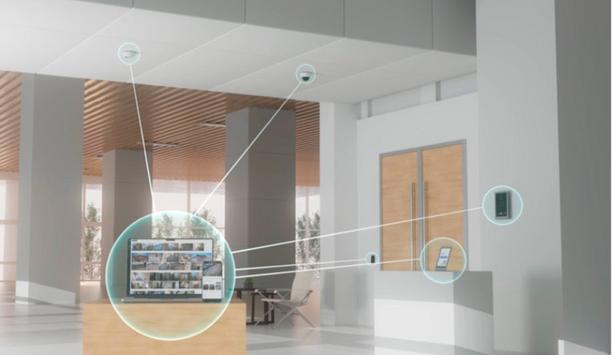
5 ways to strengthen physical security with an integrated system
Download
The benefits of Edge AI + Cloud for security systems
Download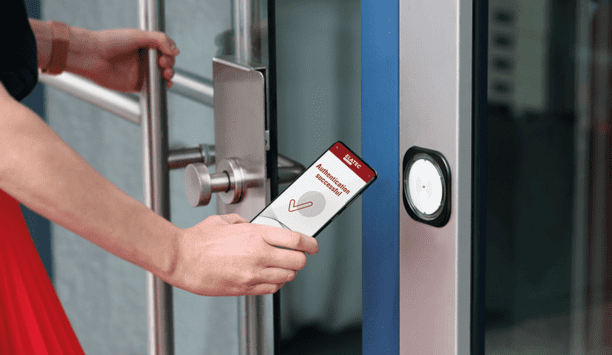
Physical access control
Download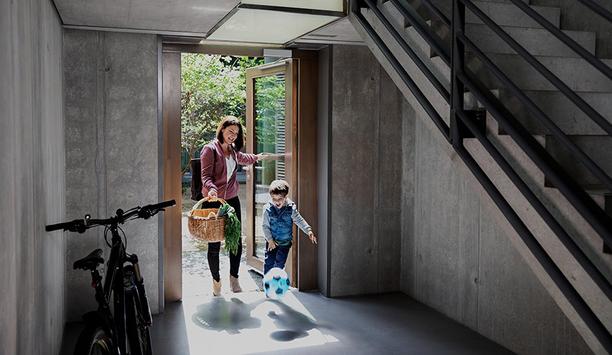
Multi-residential access management and security
Download
Precision and intelligence: LiDAR's role in modern security ecosystems
Download
Managing security in the age of boundaryless working
Download
Effectively branding a multifamily property
Download
Integrating control access and security
Download
6 good reasons to embrace mobile credentialing
Download
The welcoming workplace
Download
Levelling up with campus safety
Download
Understanding key control systems and best practices
Download
Assessing safety readiness for education campuses
Download
Improving city mobility using connected video technology
Download
Public-private partnerships on campus: What you need to know
Download
5 ways to strengthen physical security with an integrated system
Download
The benefits of Edge AI + Cloud for security systems
Download
Physical access control
Download
Multi-residential access management and security
Download
Precision and intelligence: LiDAR's role in modern security ecosystems
Download
Managing security in the age of boundaryless working
Download
Effectively branding a multifamily property
Download
Integrating control access and security
Download
6 good reasons to embrace mobile credentialing
Download
The welcoming workplace
Download

Videos
Building security: Manufacturers & Suppliers

Using artificial intelligence (AI) to automate physical security systems
Download
A modern guide to data loss prevention
Download
7 proven solutions for law enforcement key control and asset management
Download
The truth behind 9 mobile access myths
Download
Access control system planning phase 2
Download





